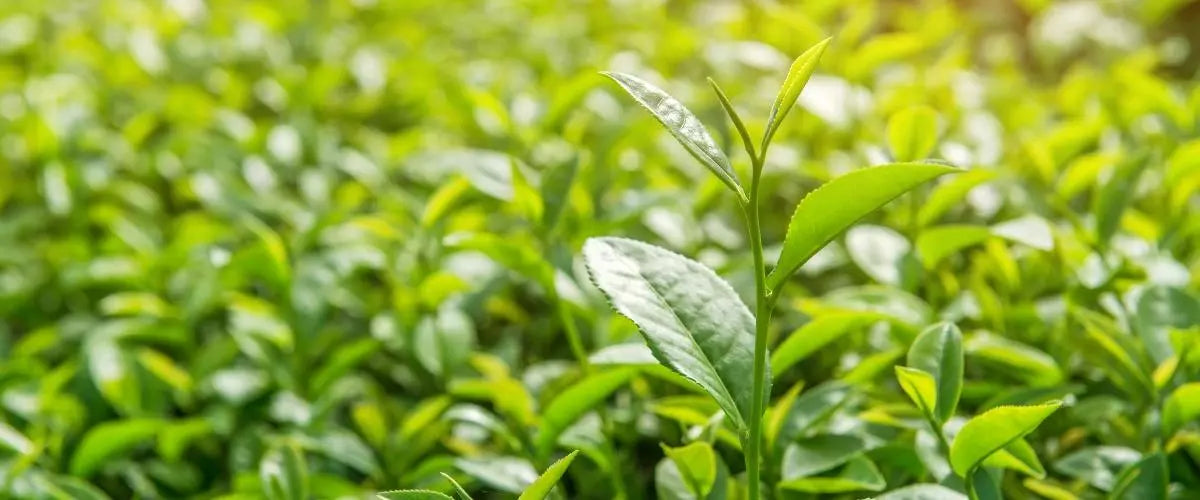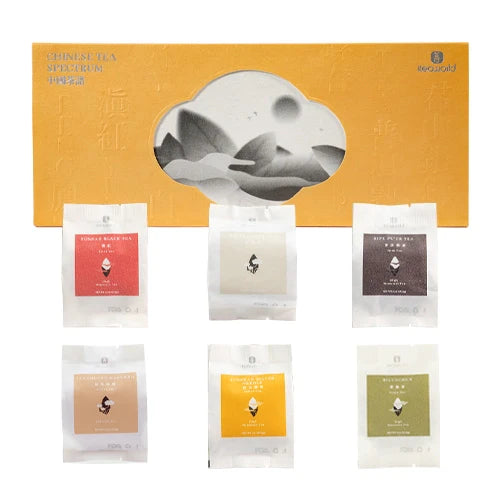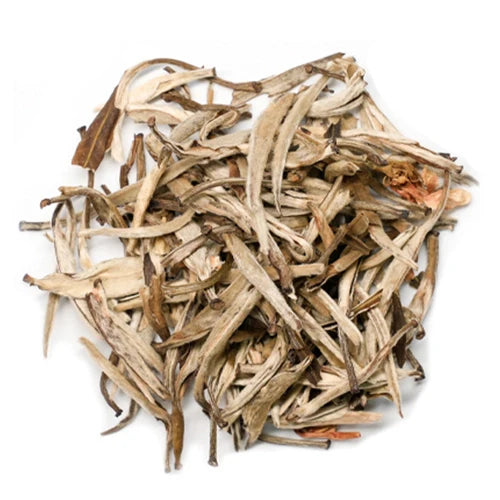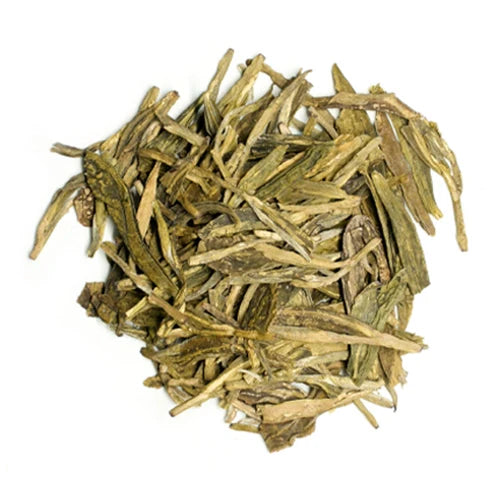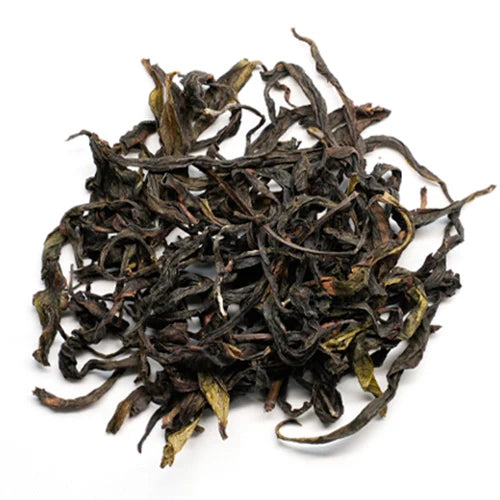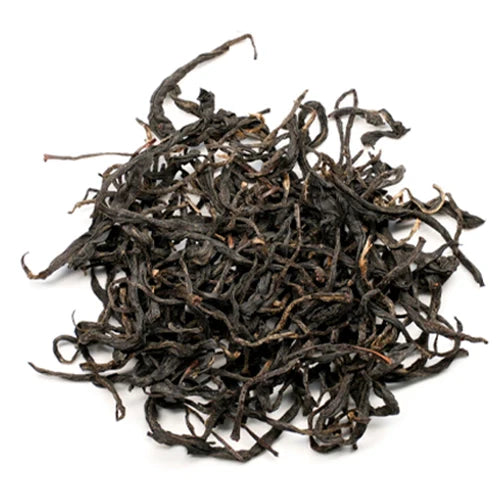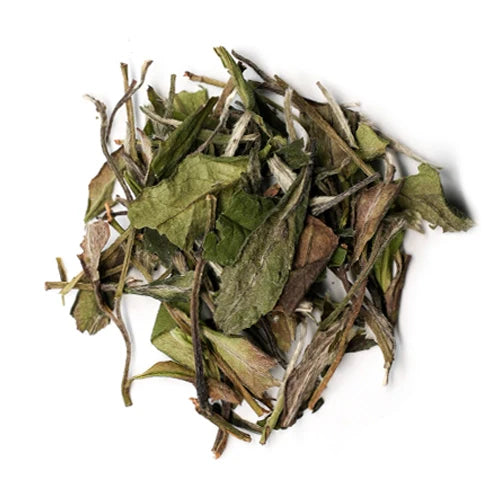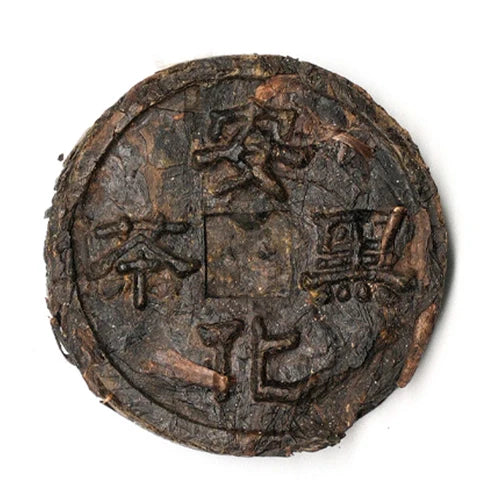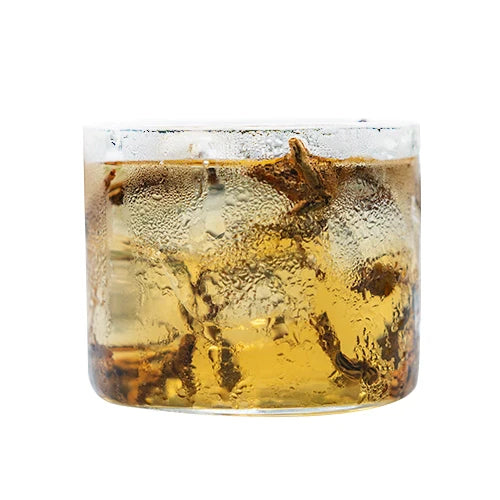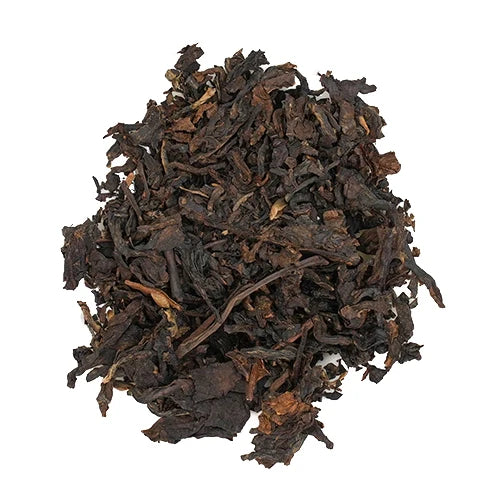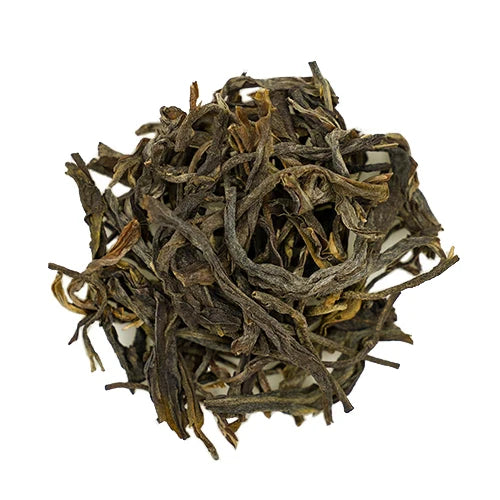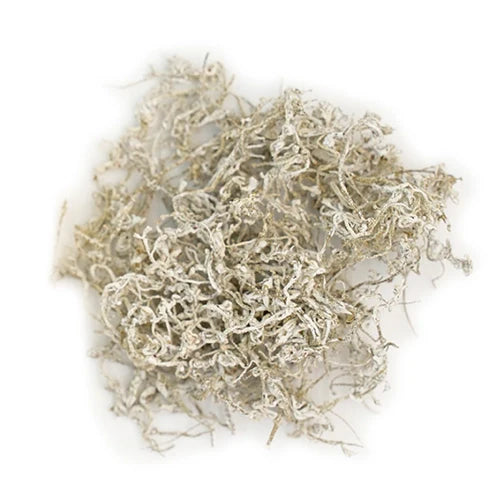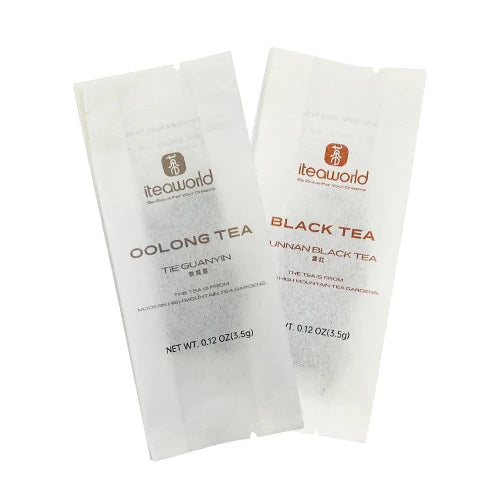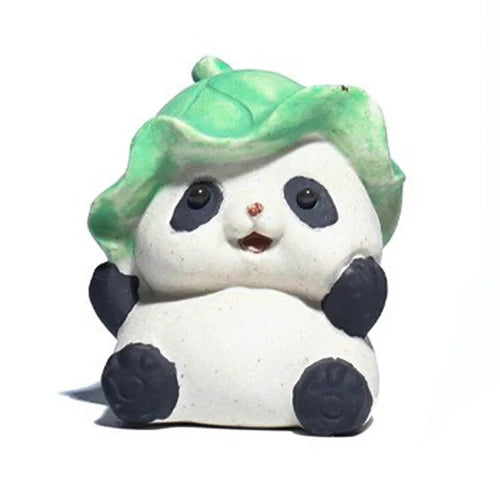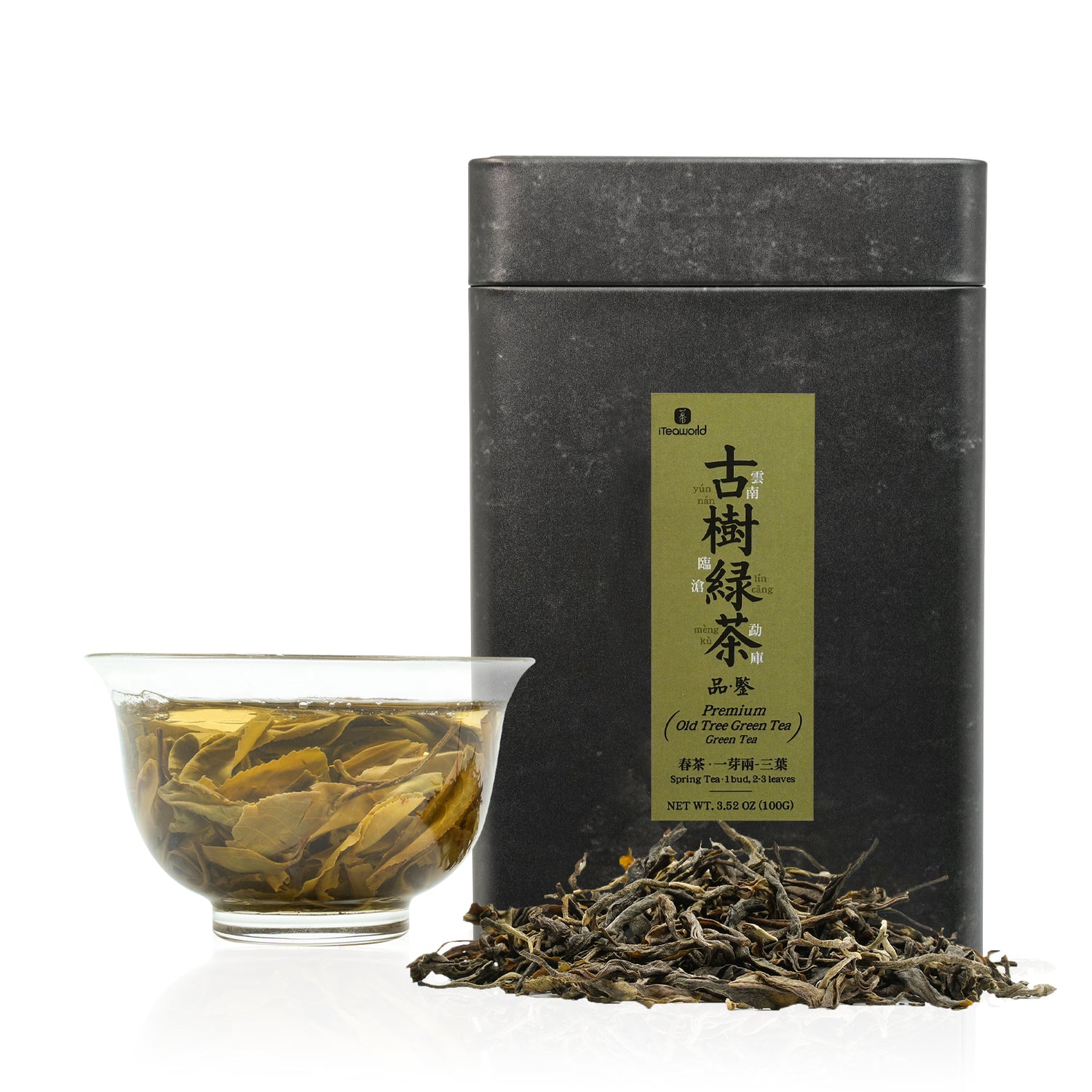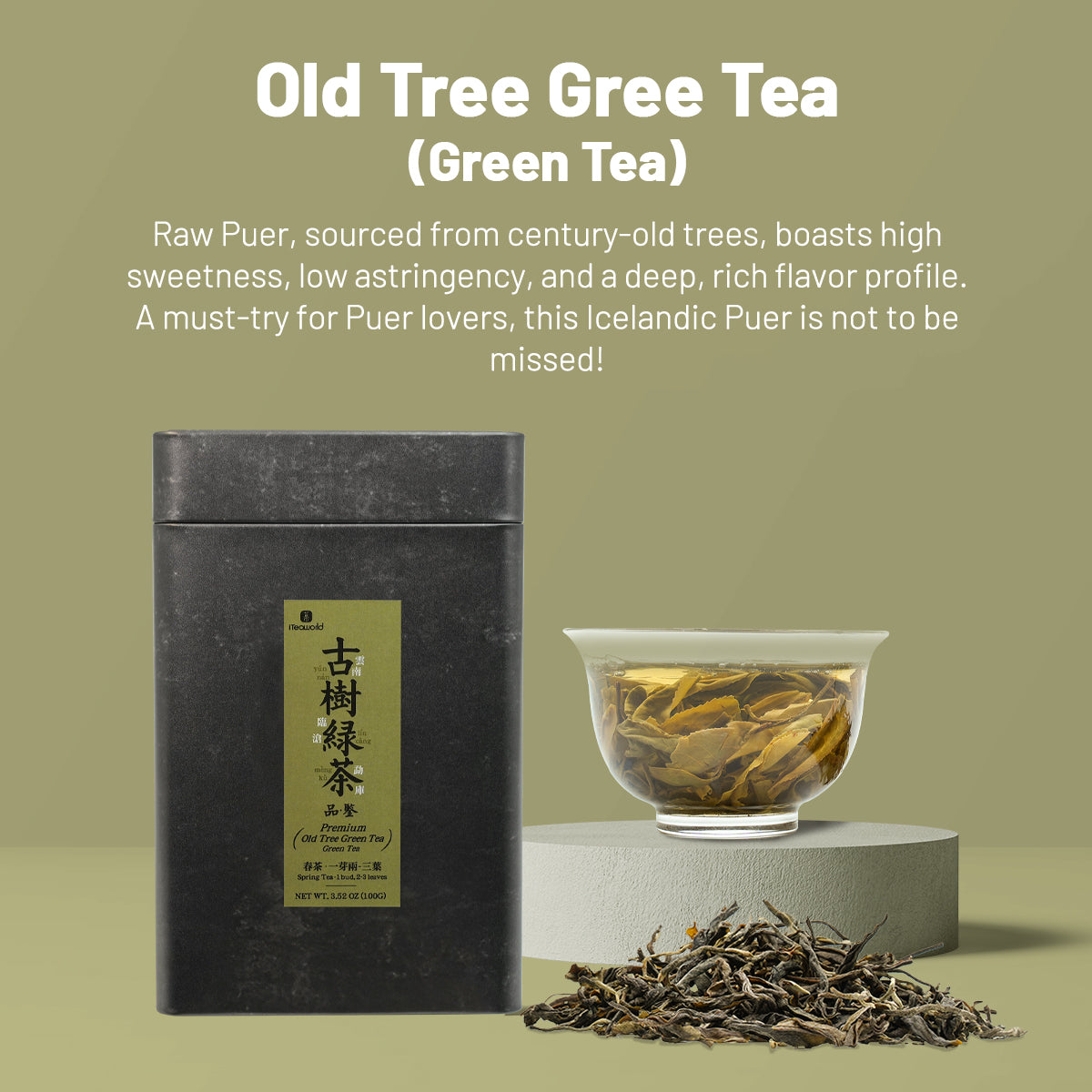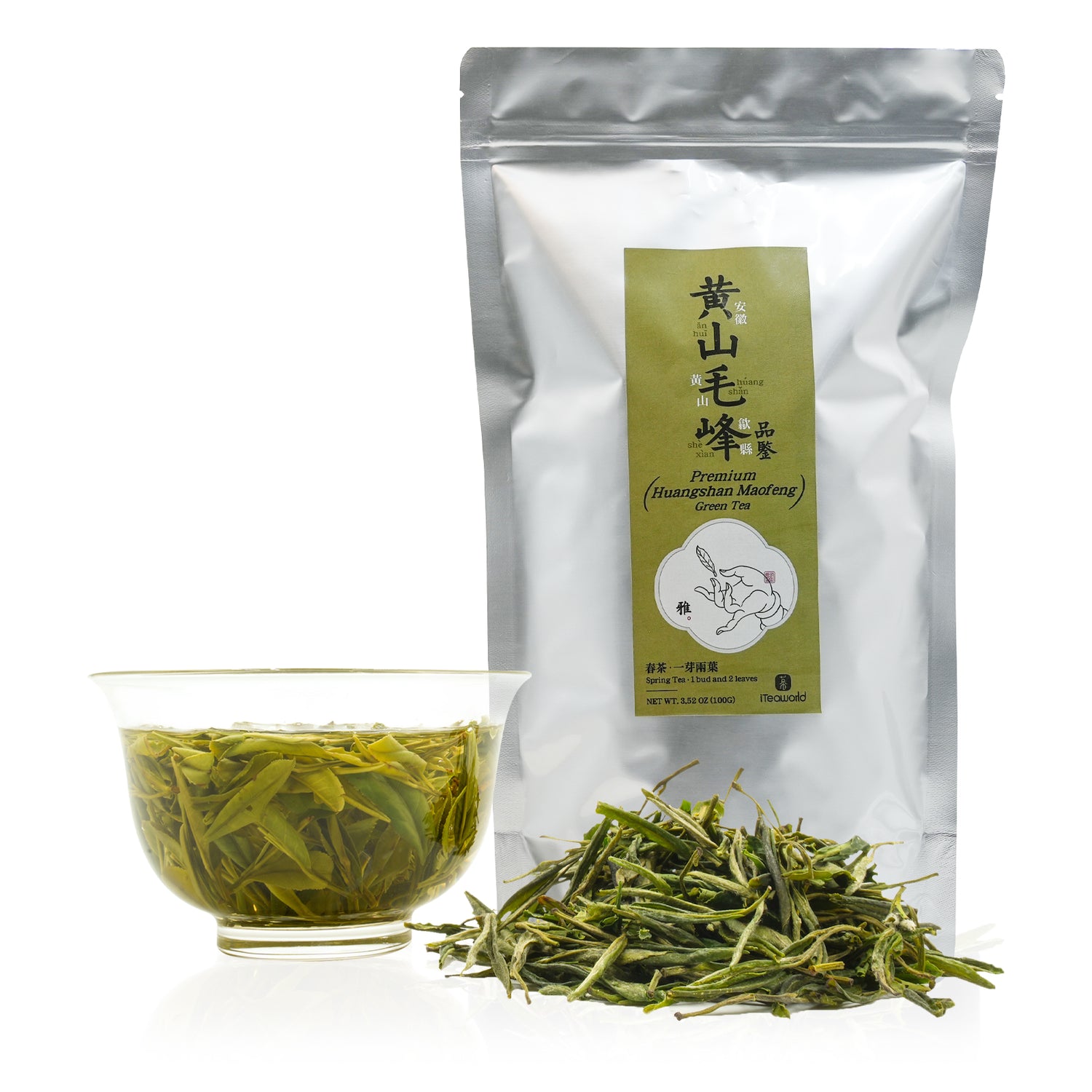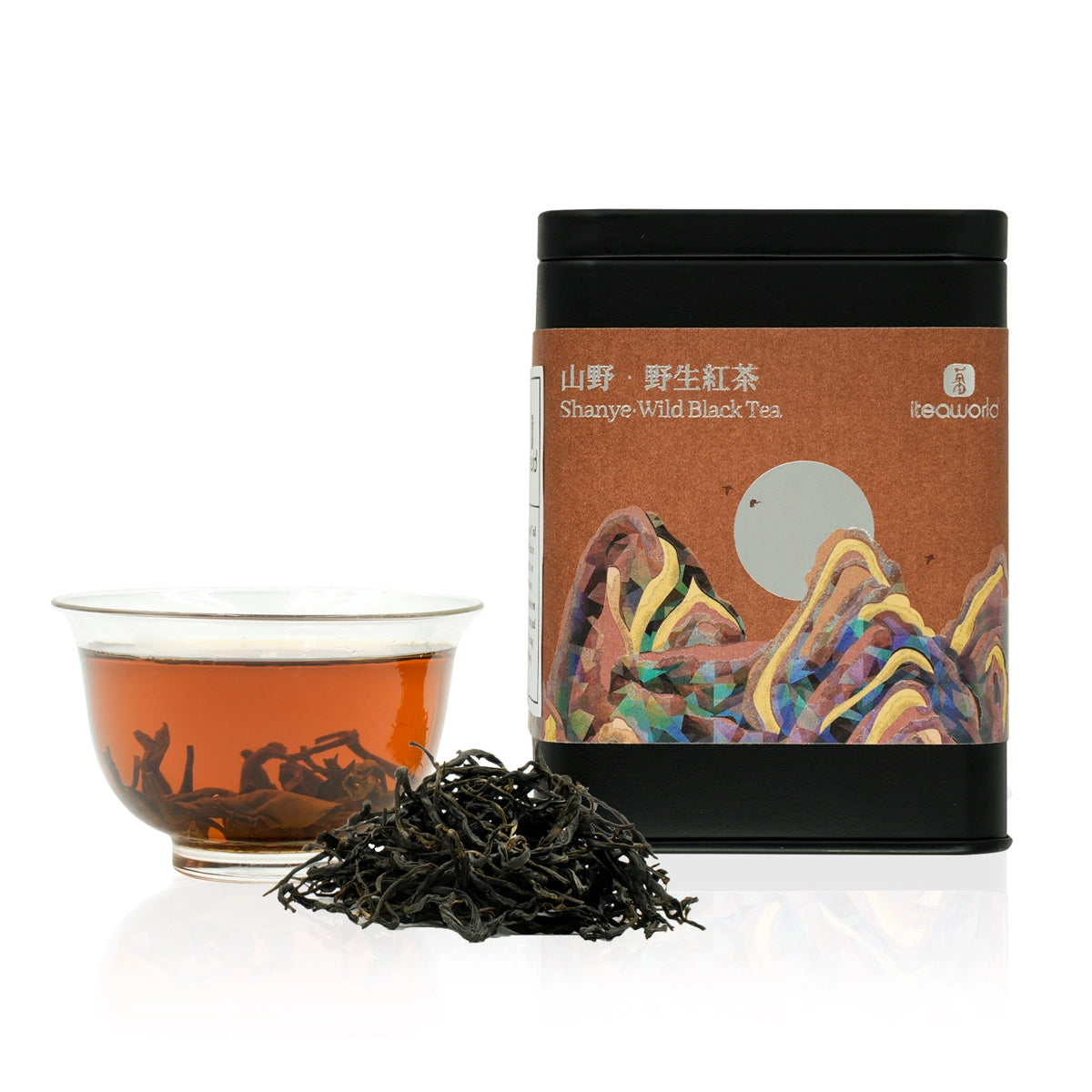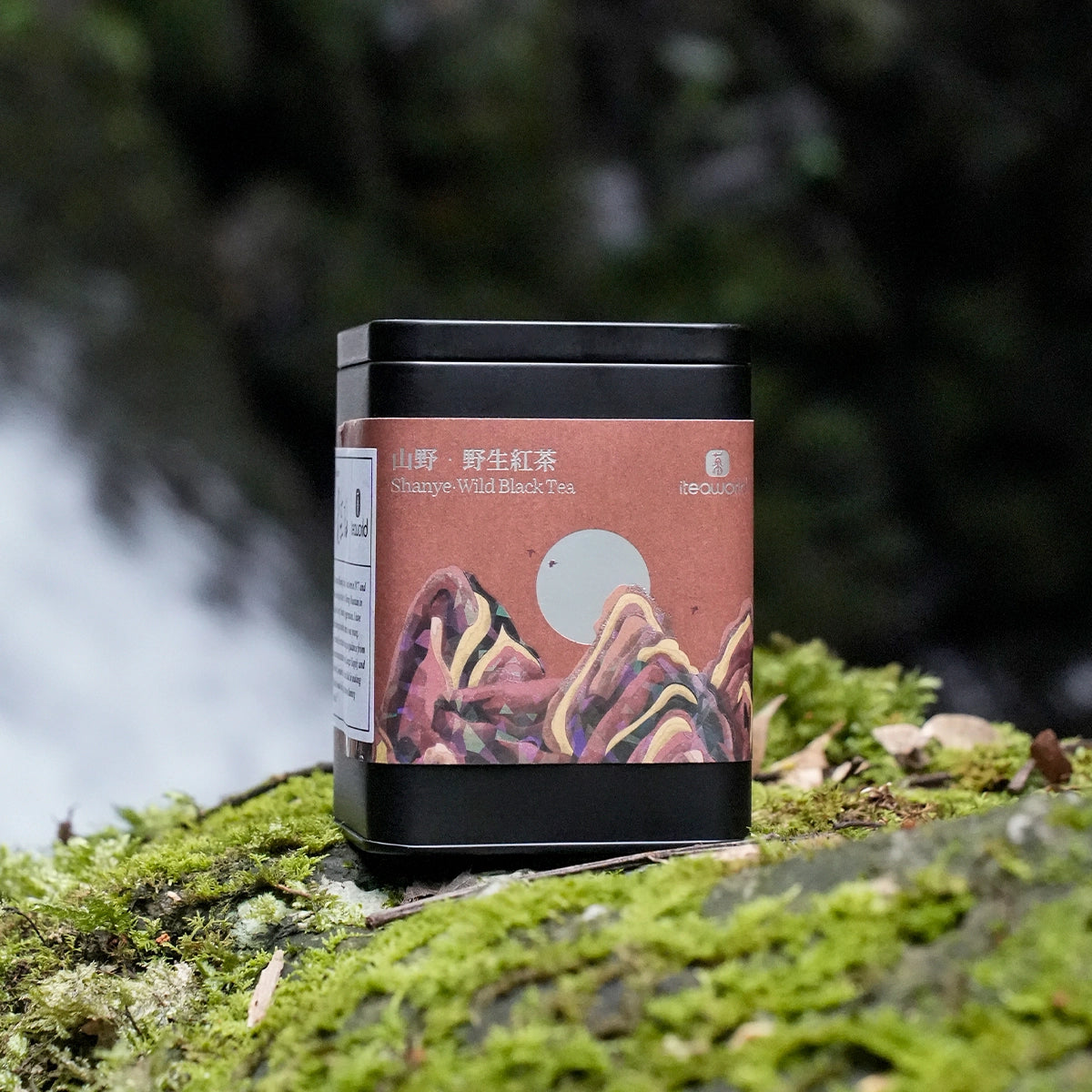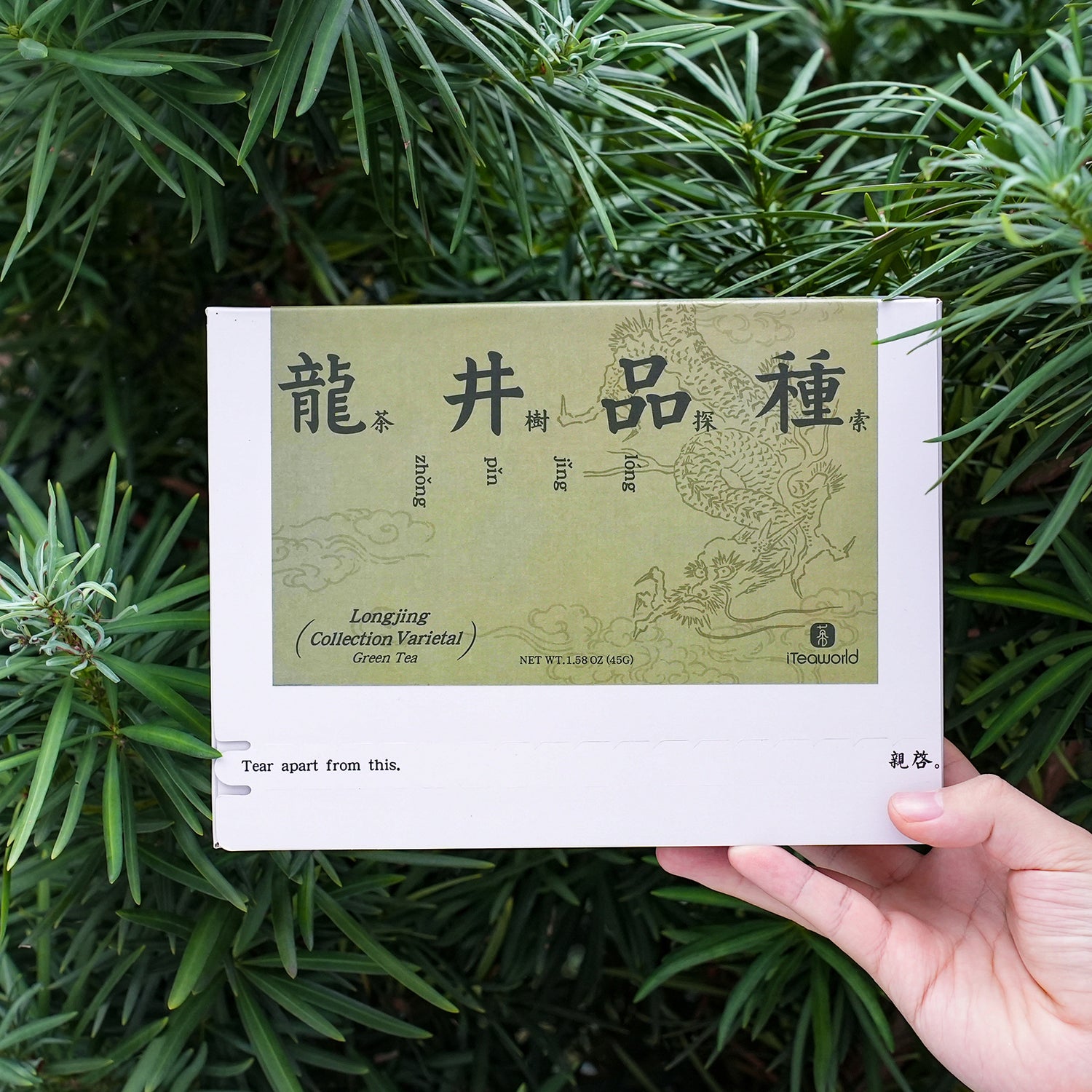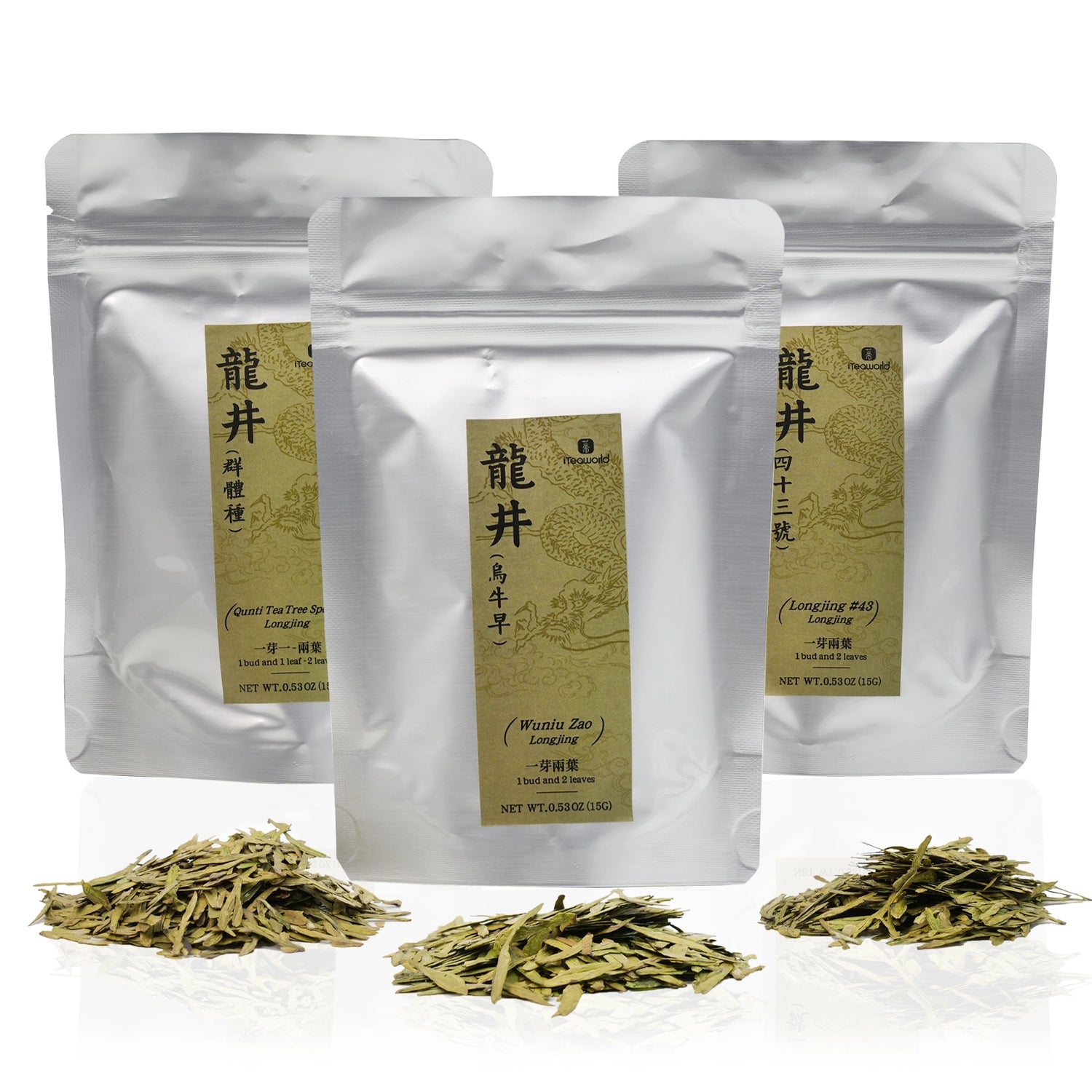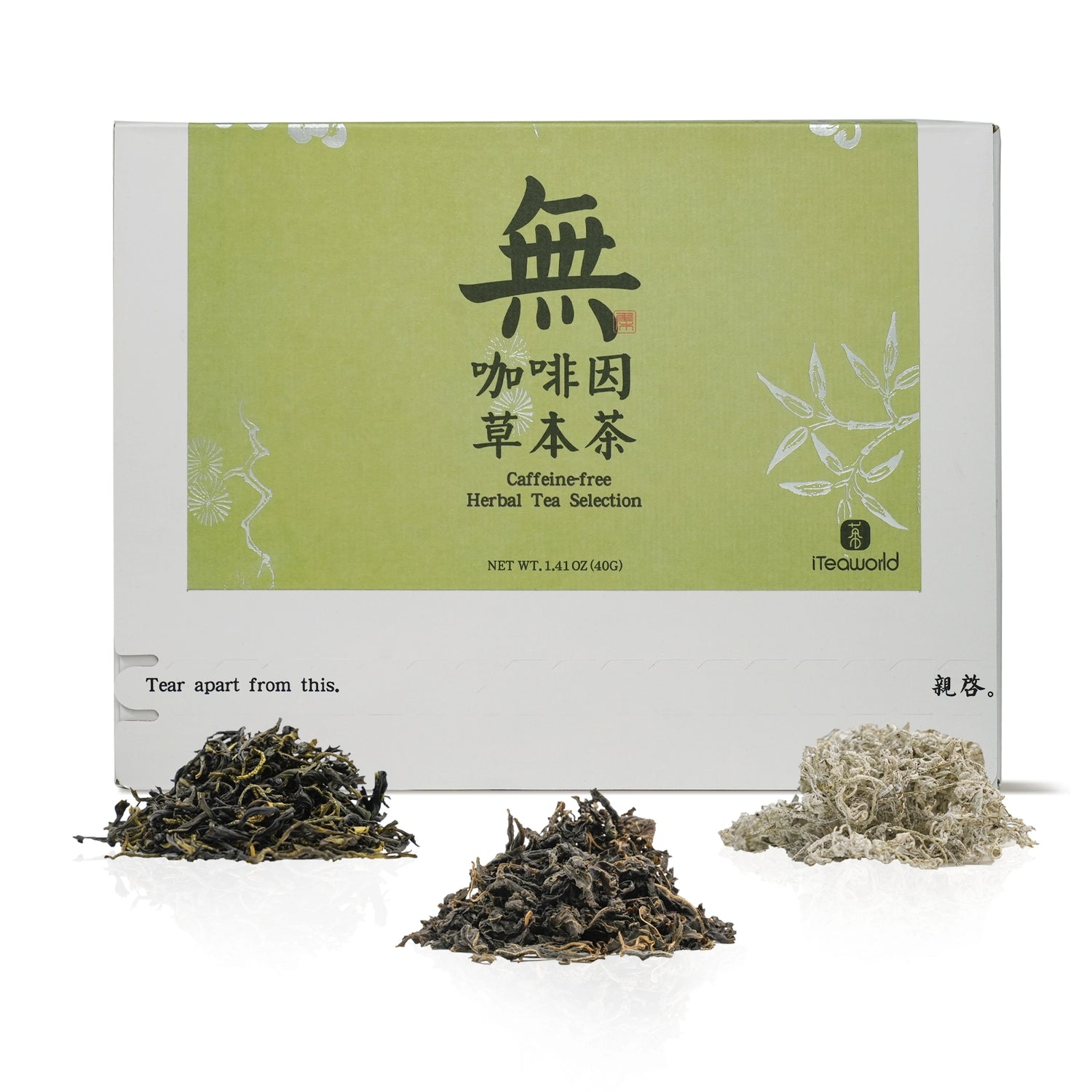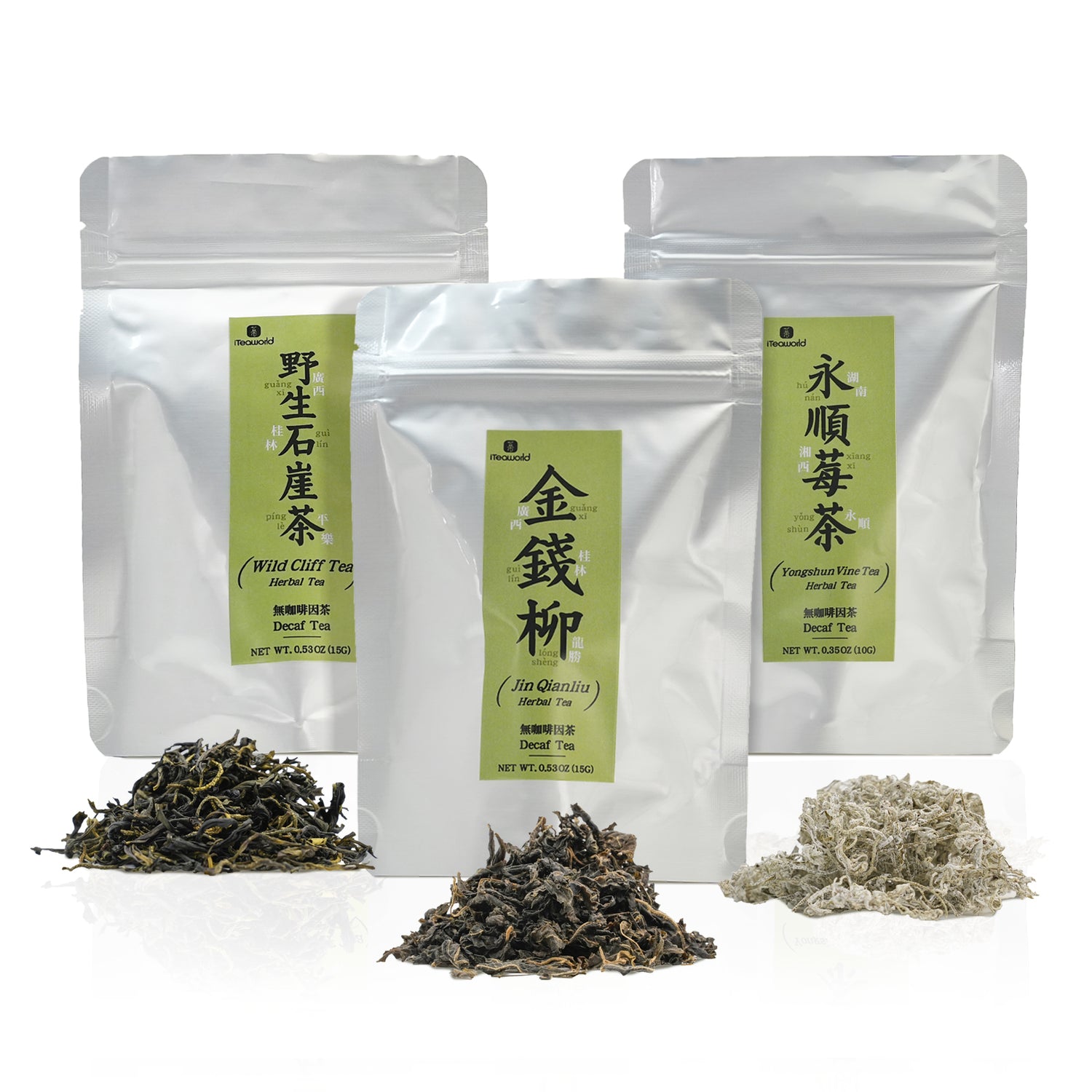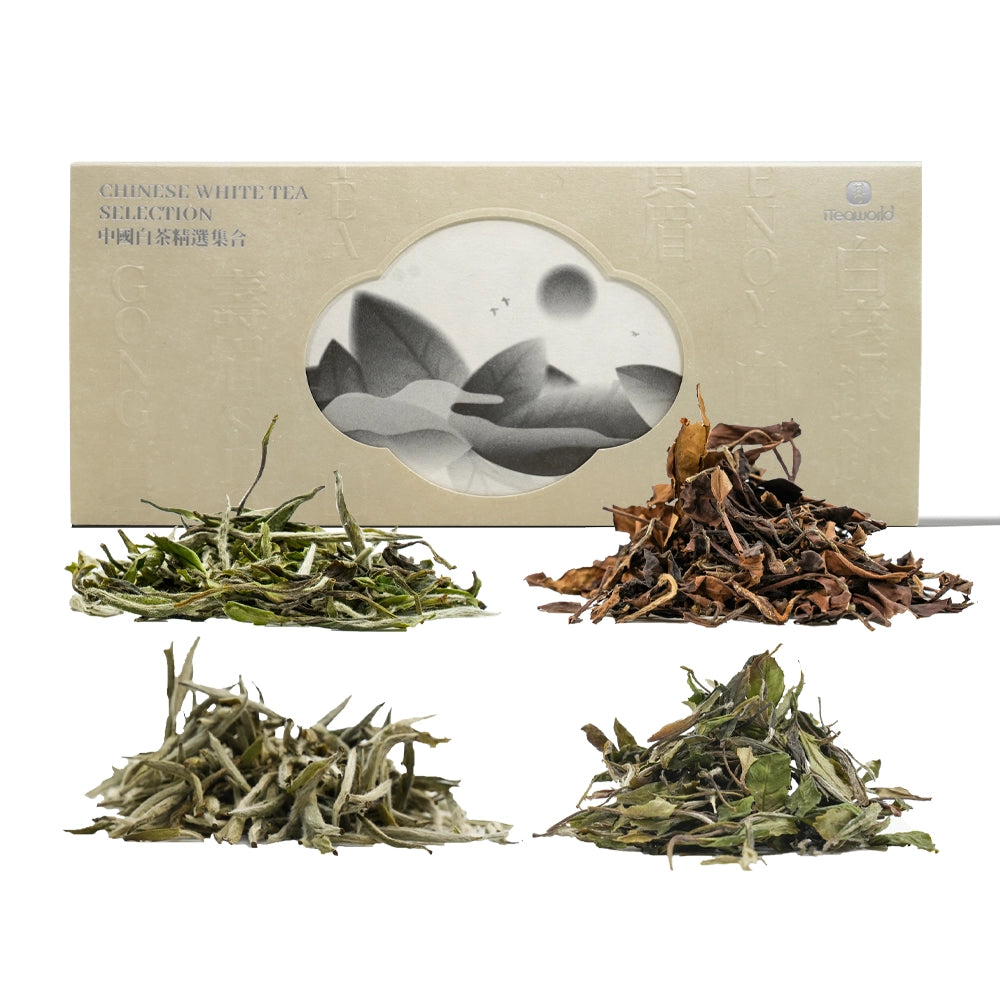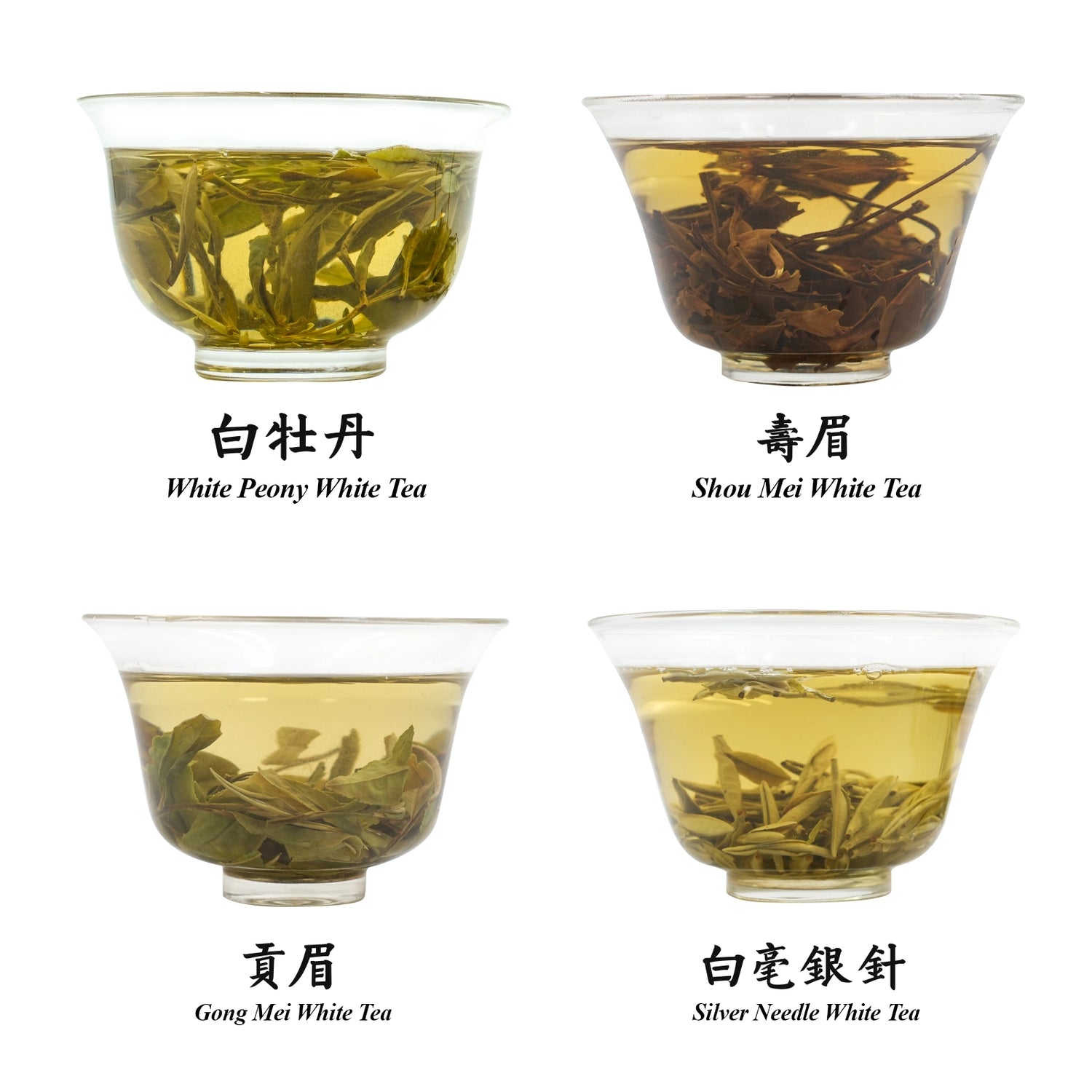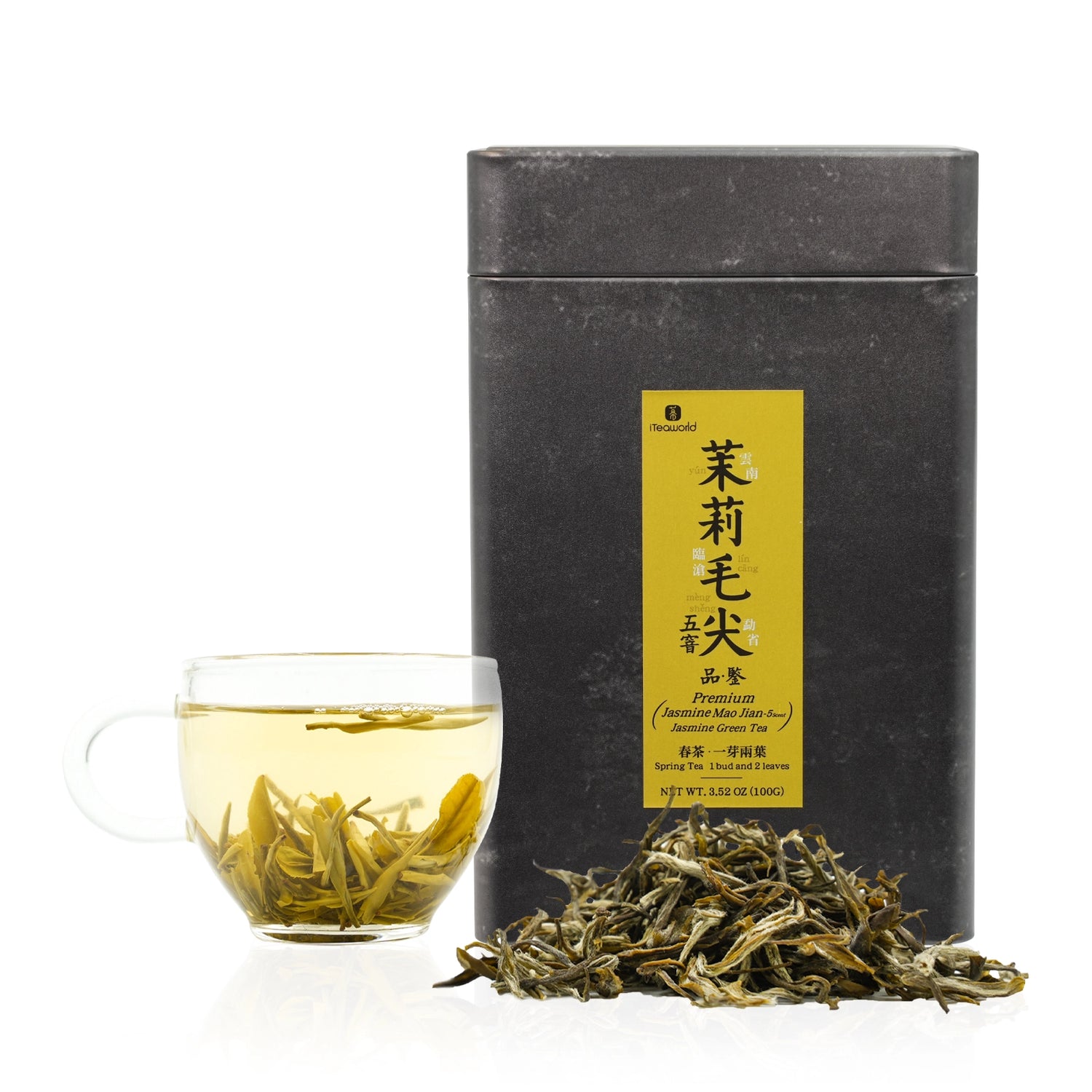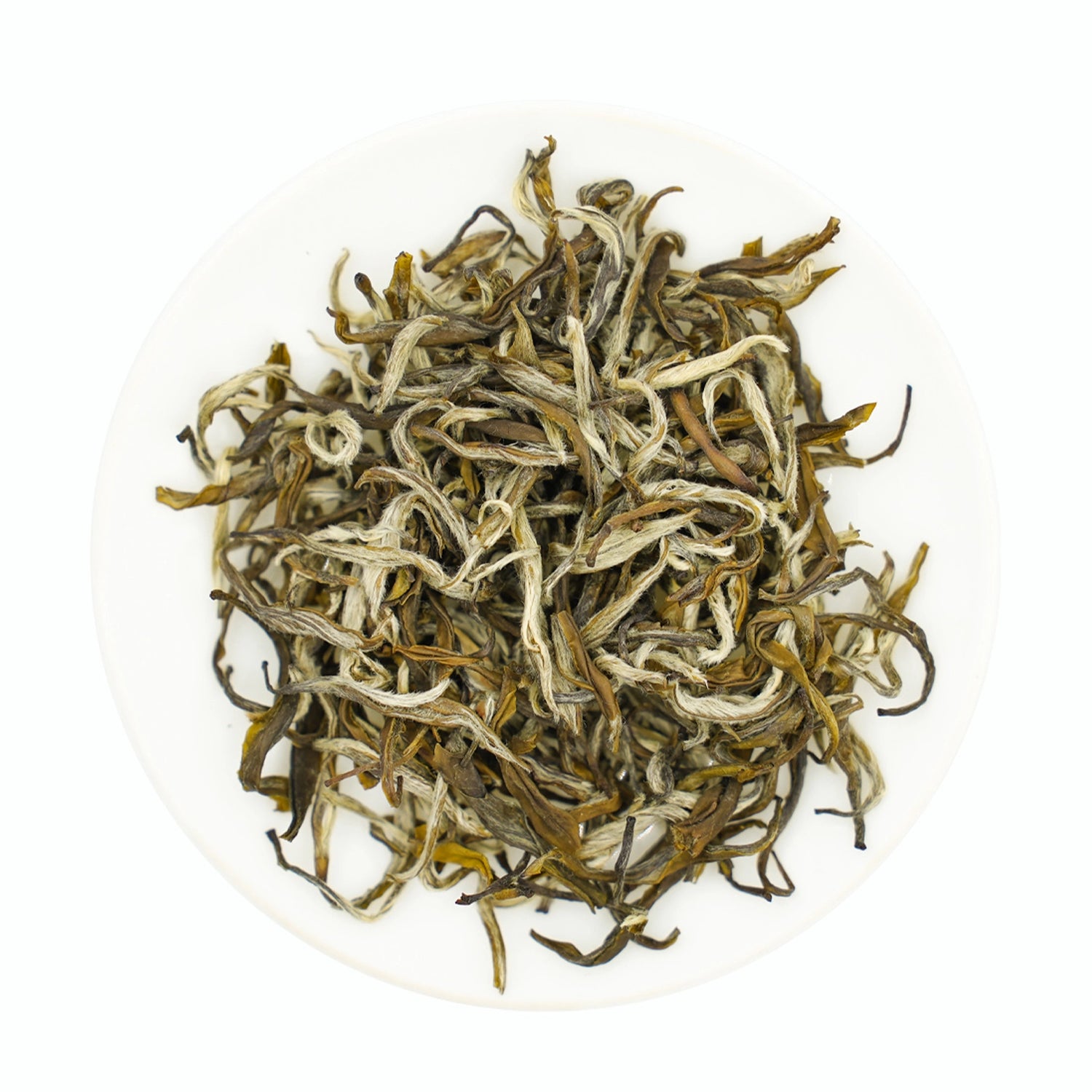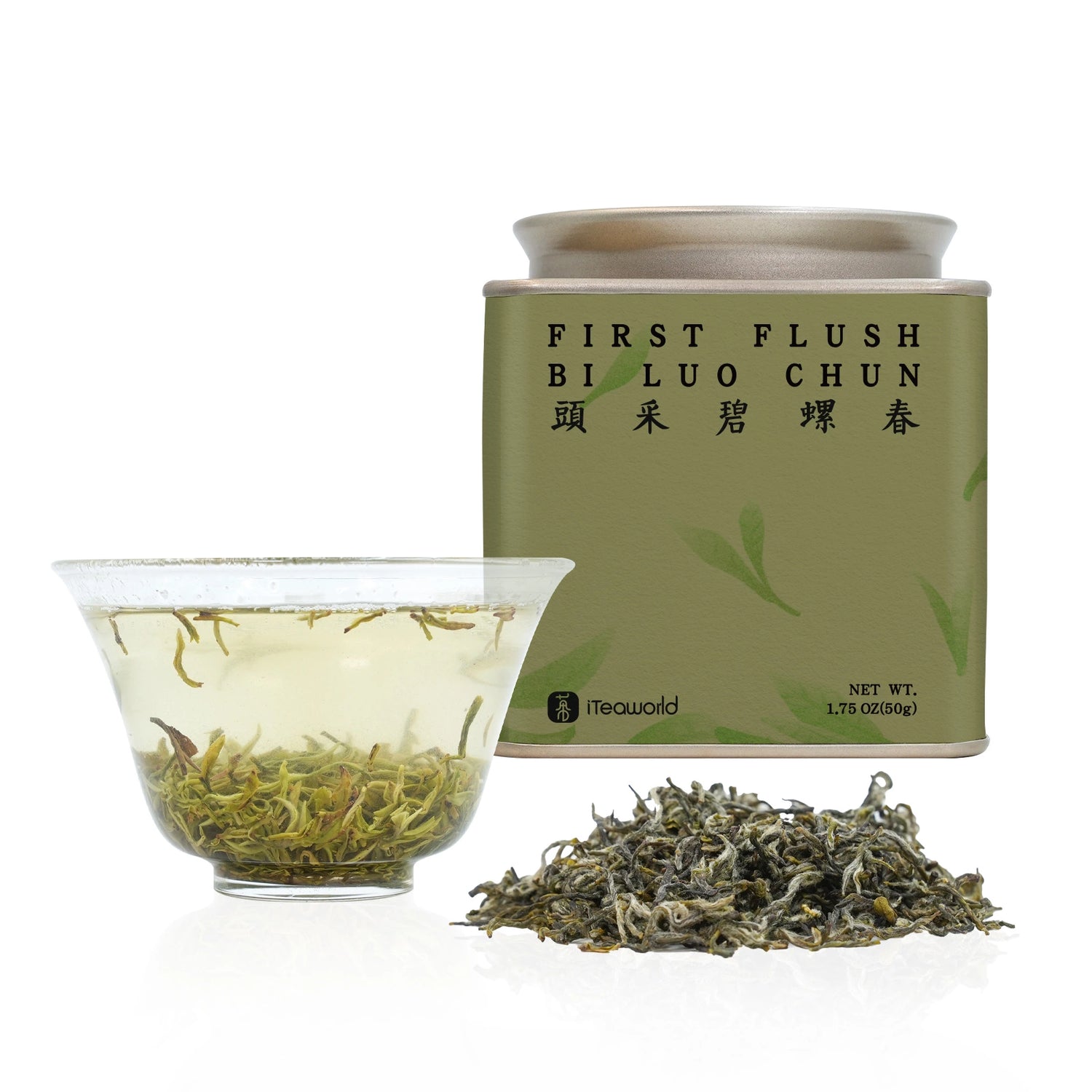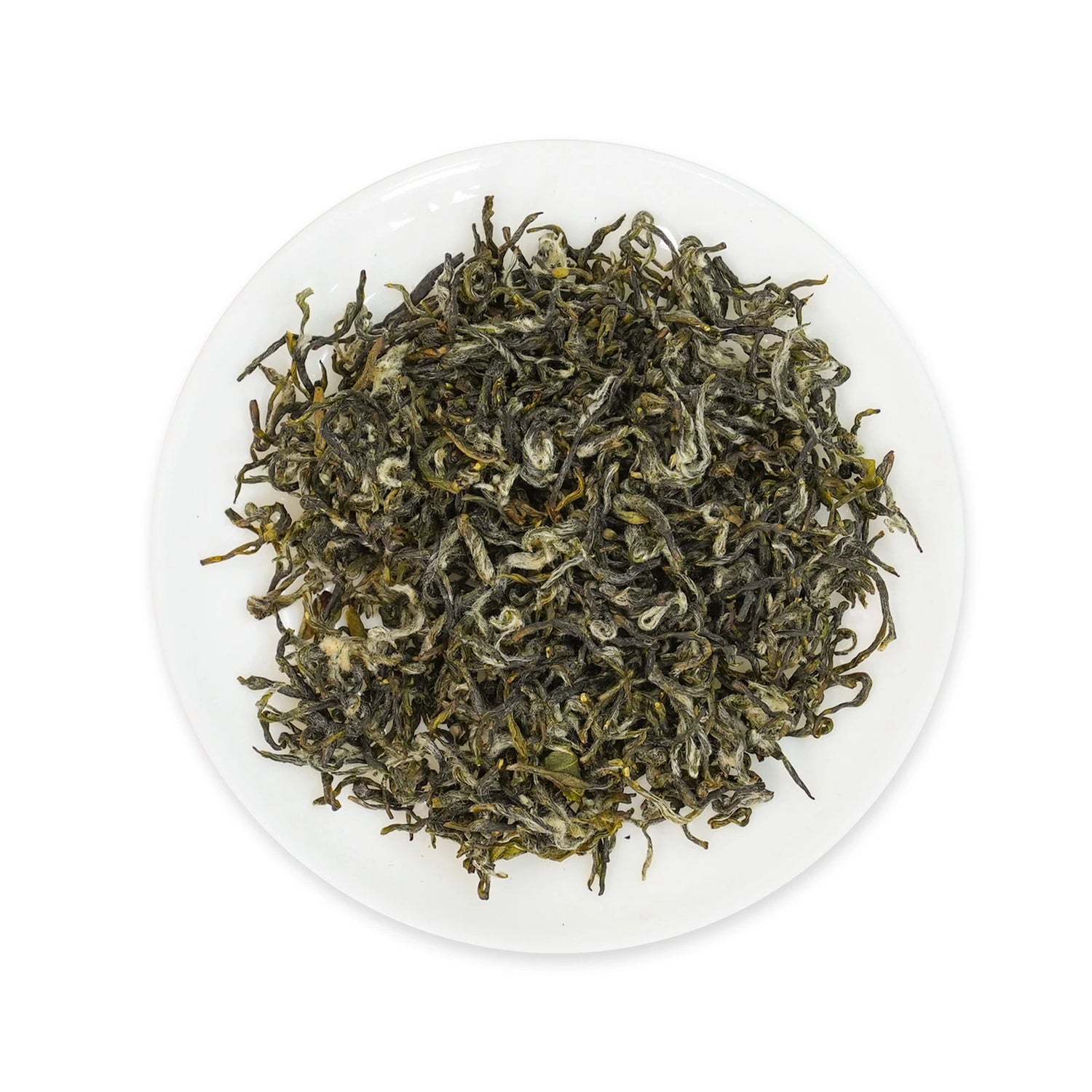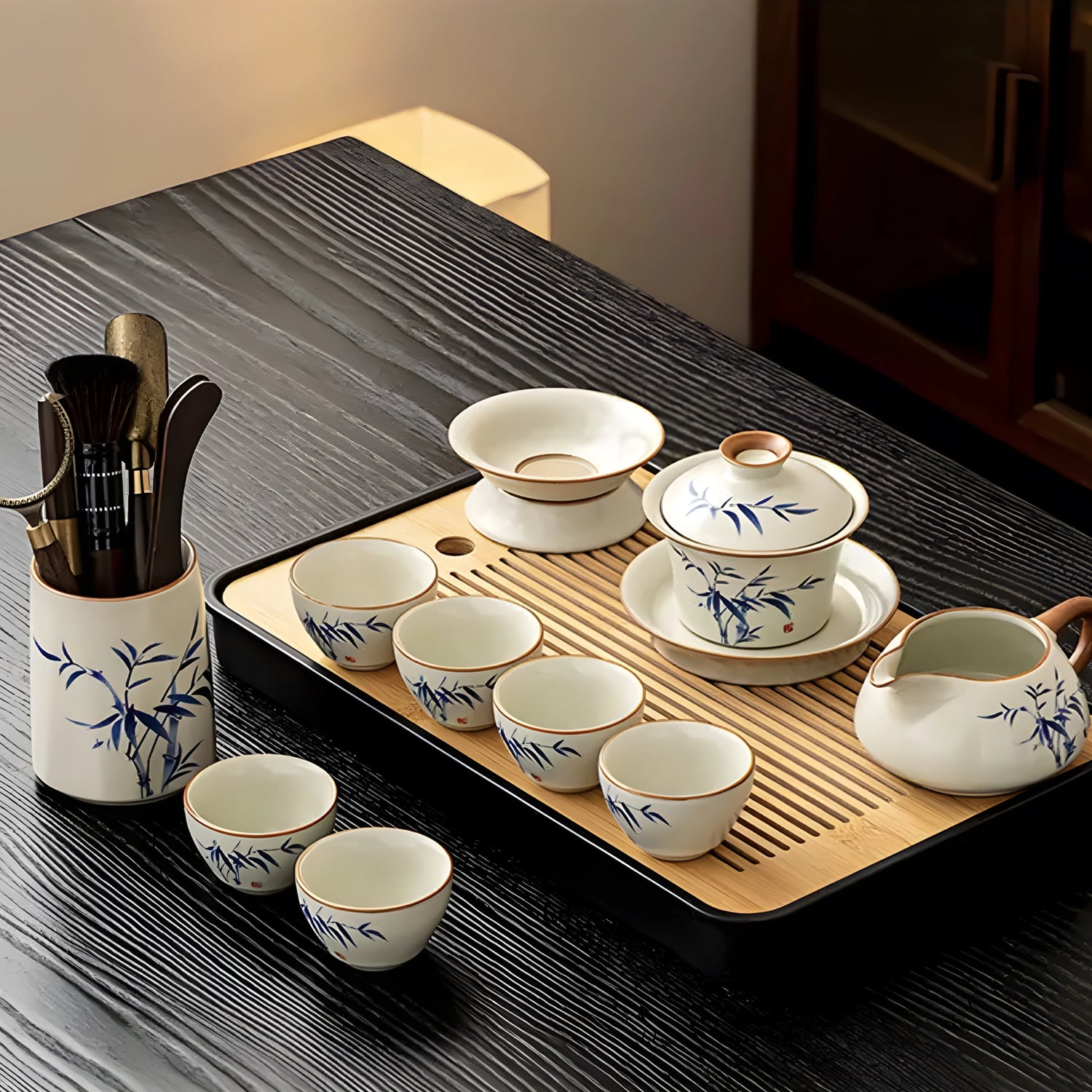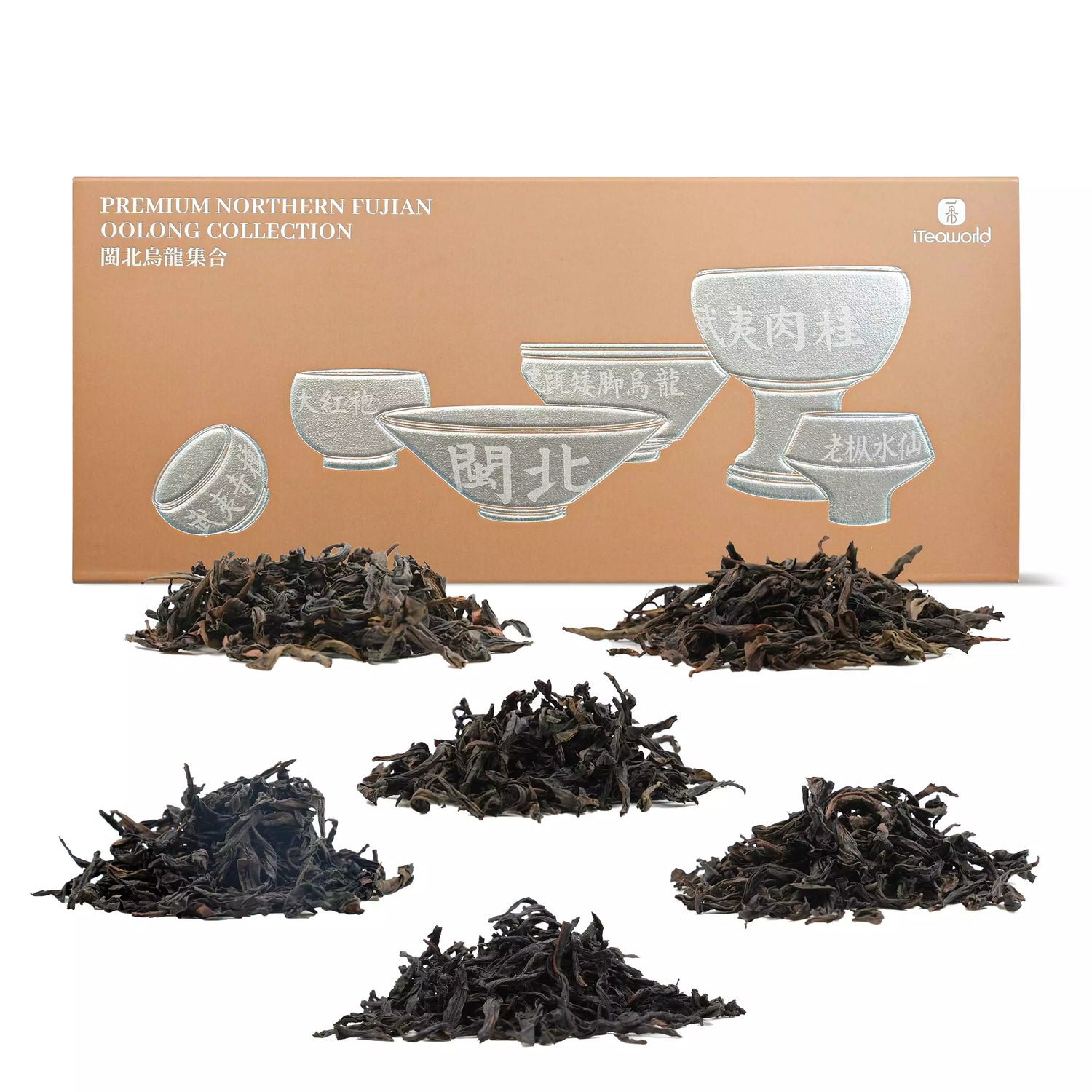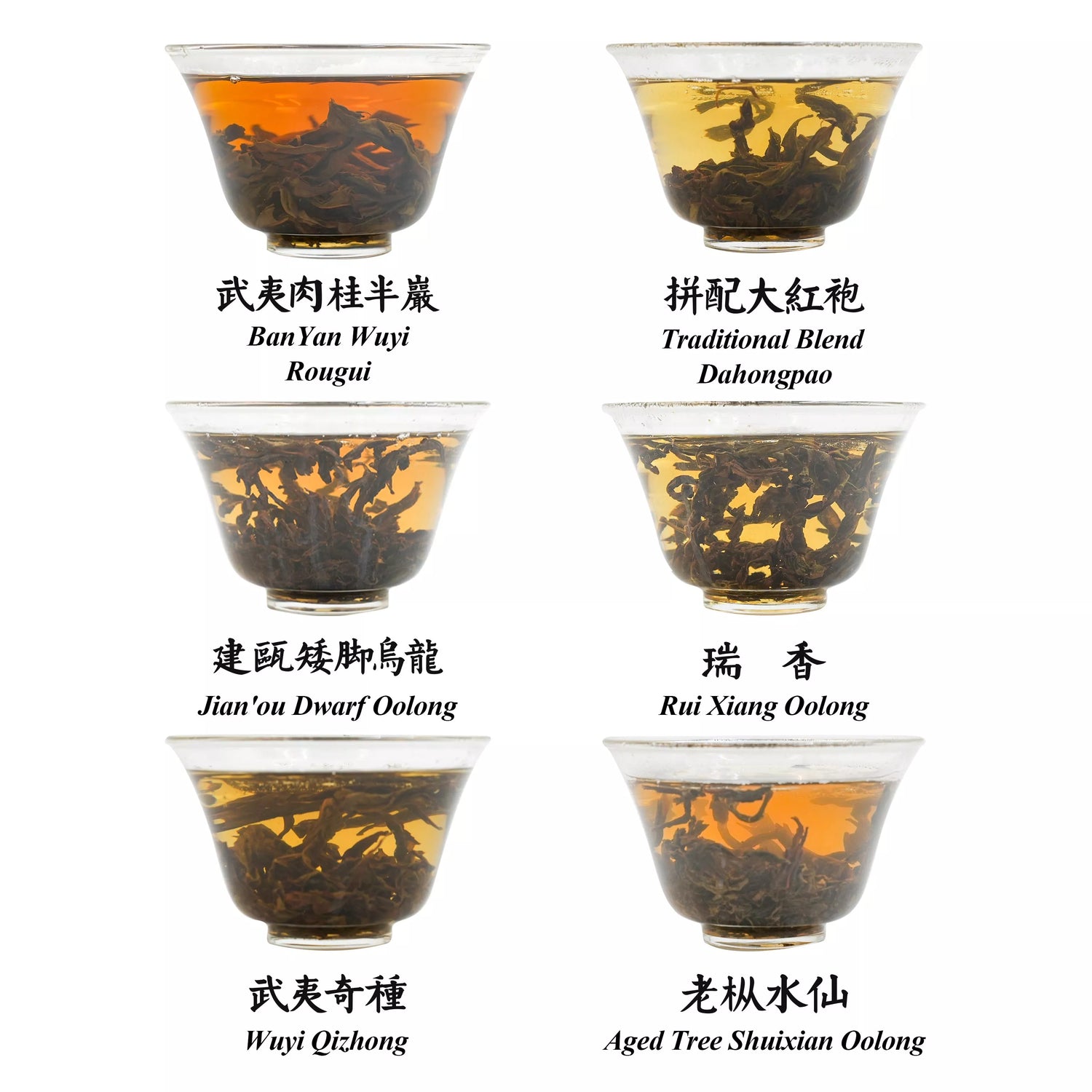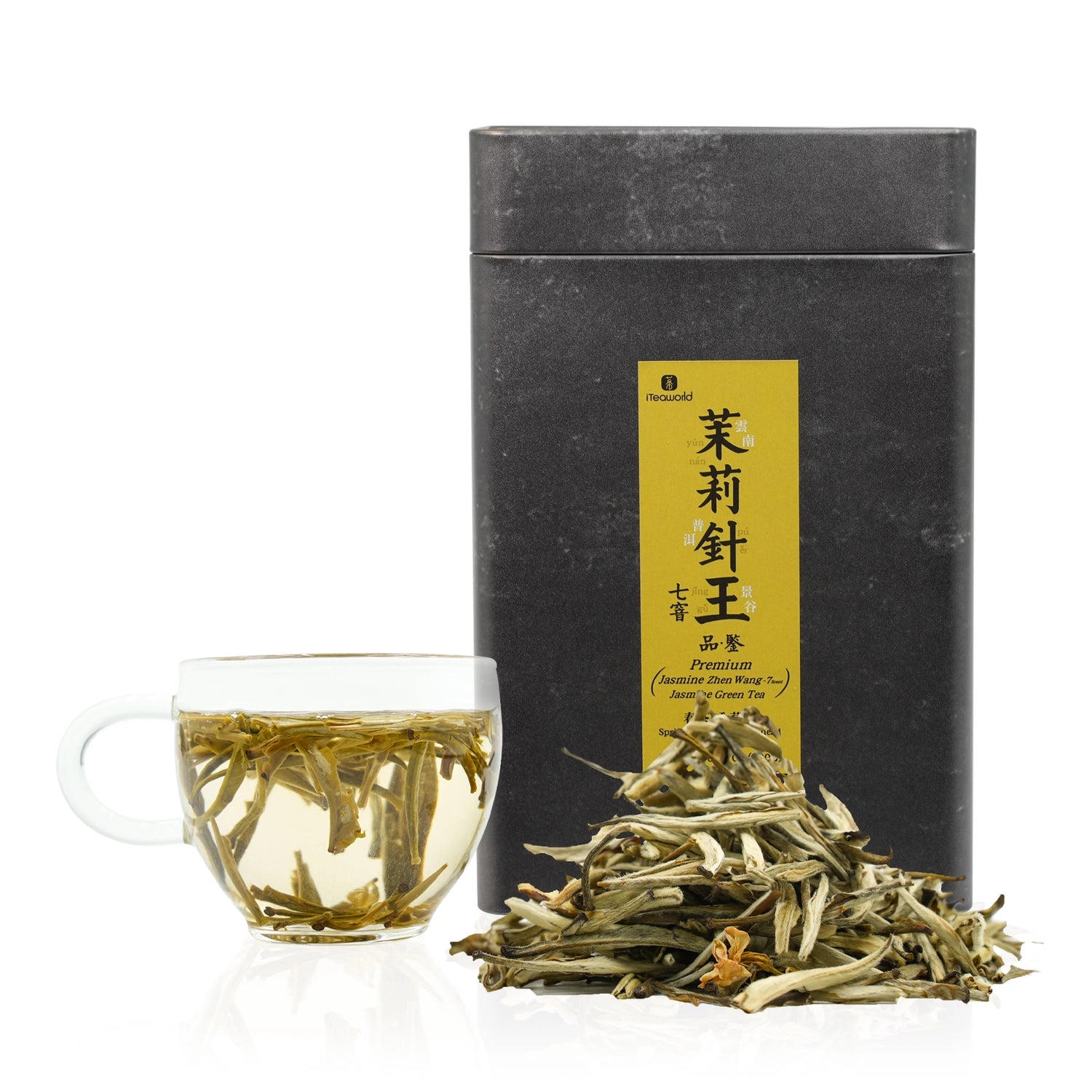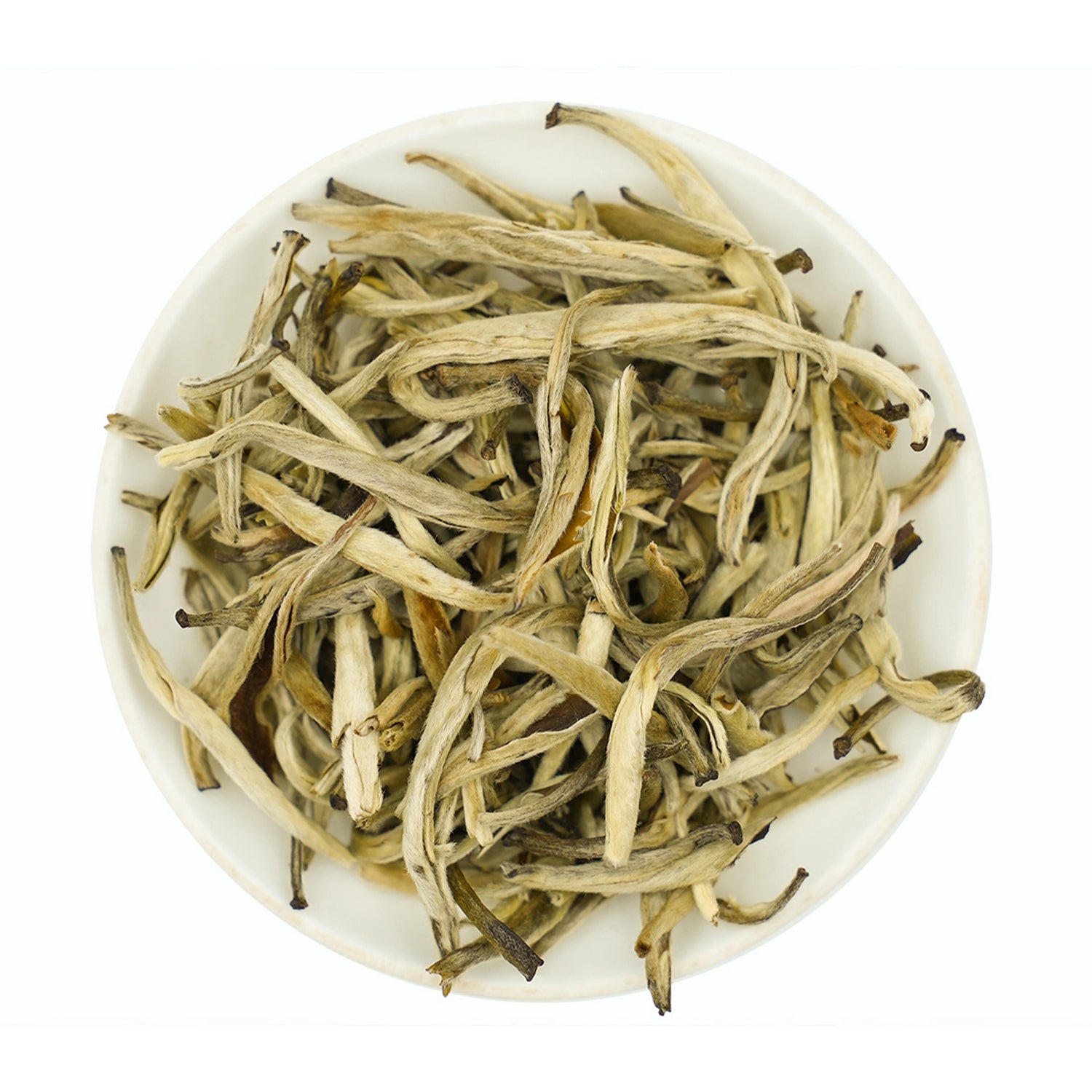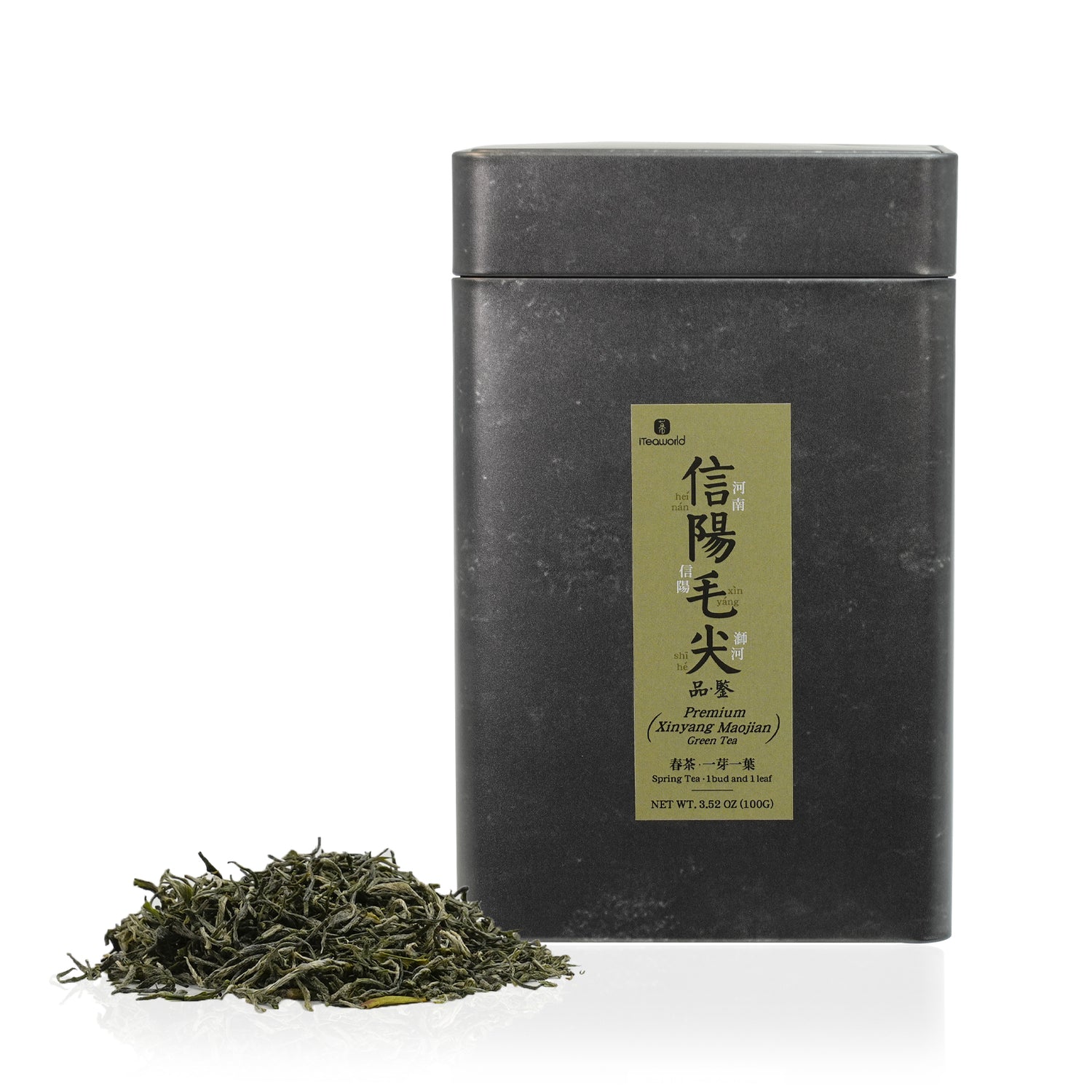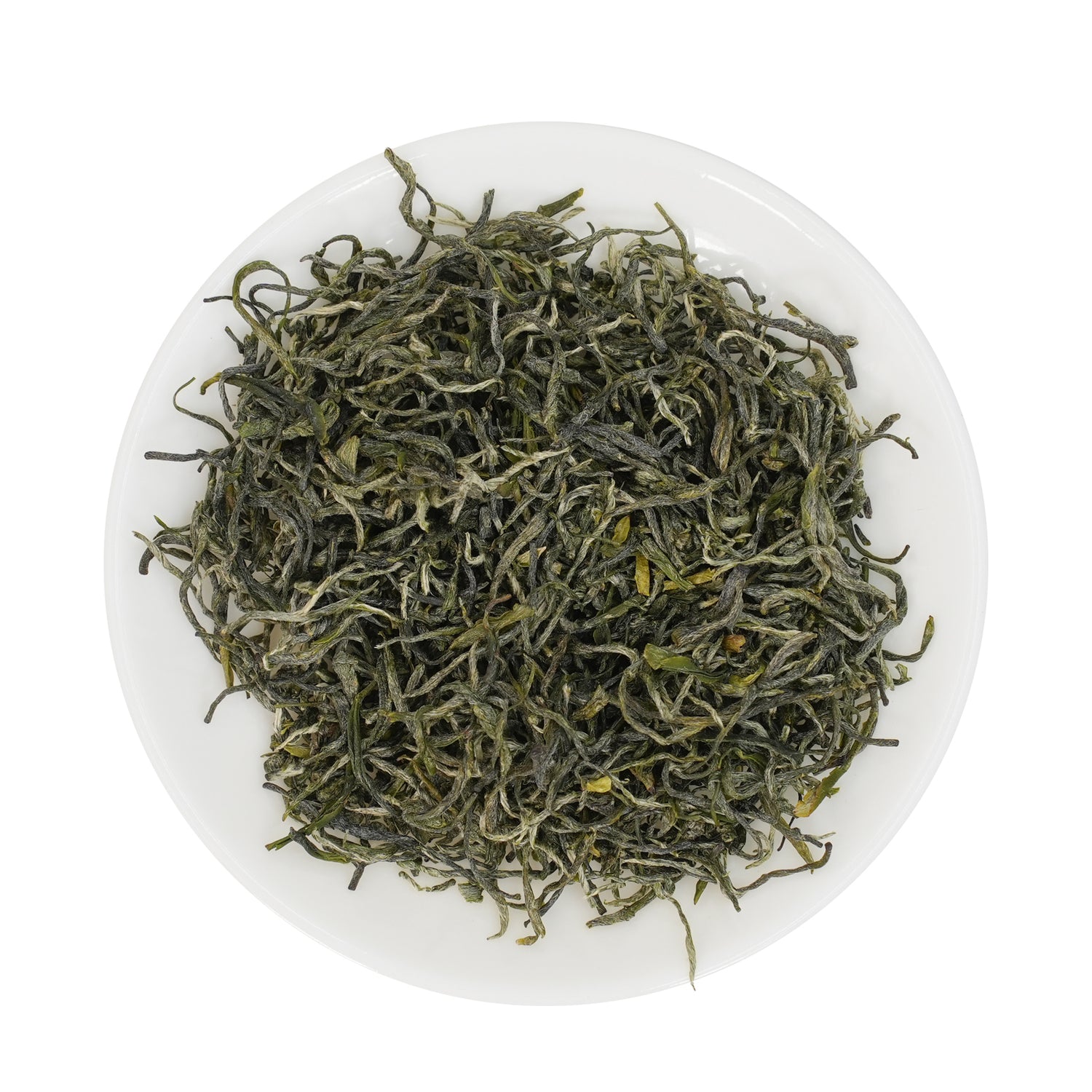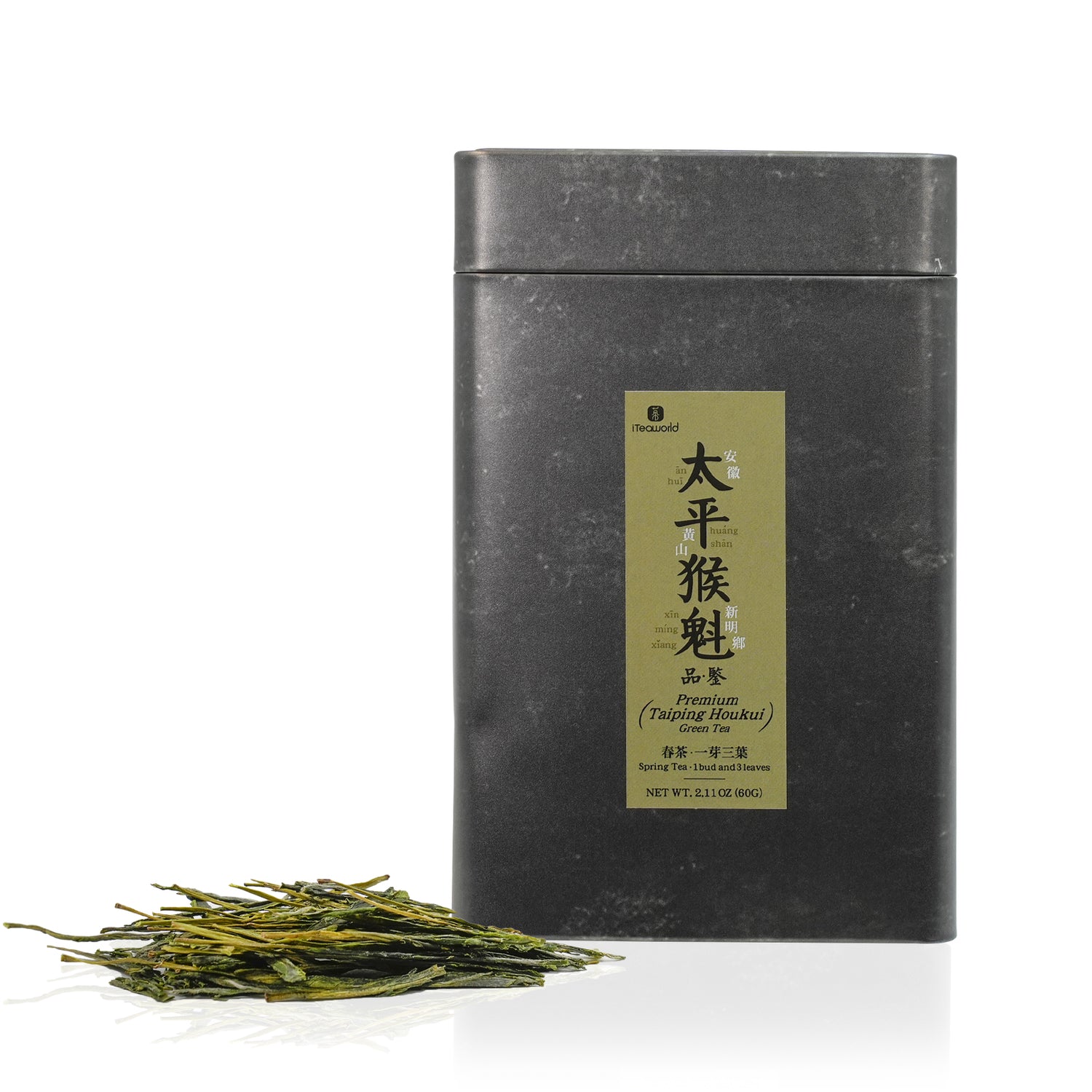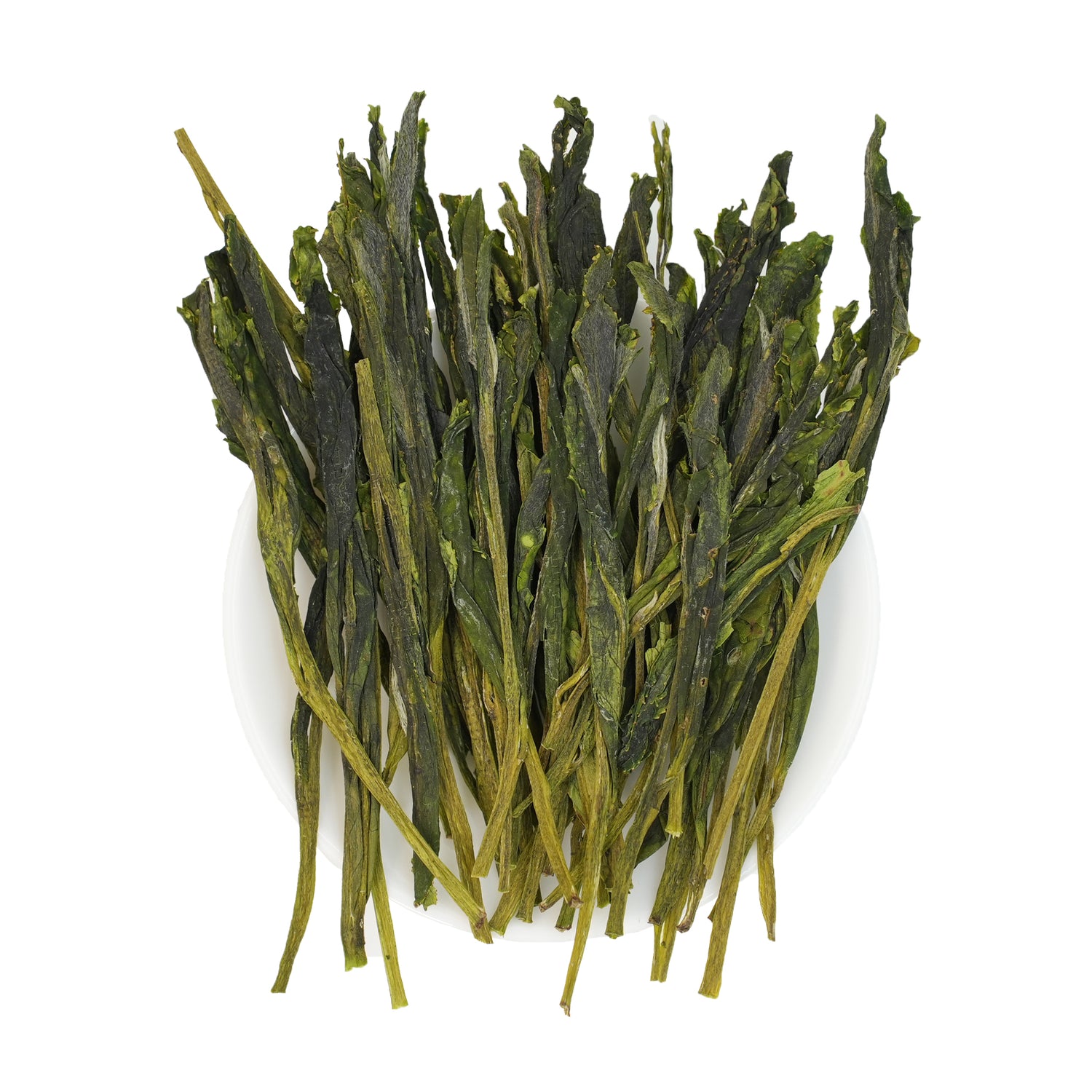Sort by:
200 products
200 products
Introduction:
This old Tree green tea is meticulously selected from the spring harvest of 2024. Plucked from high-altitude ancient tea gardens at elevations of approximately 1600 meters, the exceptional growing conditions impart a refreshing taste and rich, layered flavors. The plucking standard of primarily one bud and two to three leaves ensures a fresh, mellow taste with a sweet aftertaste and a delightful honey-like aroma.
Reasons to Recommend:
- Natural Flavor: Sourced from the untouched forests of Yunnan, this old Tree green tea boasts a rich, earthy flavor. Its unique, bold taste and abundant polyphenols represent a perfect blend of nature and tradition, embodying high-quality, authentic Chinese loose-leaf tea.
- Rich in Nutrients: As an unfermented and non-oxidized tea, old Tree green tea exudes a strong, earthy aroma. Rich in polyphenols and catechins, it offers a fresh, complex flavor and powerful antioxidant properties, making it ideal for those seeking a deeper connection with nature through tea.
- High-Mountain Tea Gardens: Since ancient times, high mountains shrouded in mist have produced premium teas. This tea thrives in such environments, where lush vegetation and organic-rich soil, combined with extreme daily temperature fluctuations, enhance the accumulation of flavorful compounds in the leaves.
- High Brewing Tolerance: This robust Chinese old Tree green tea retains its fresh, smooth flavor even after seven infusions.
Oxidation Level: 0%
Roasting Level: 0%
Tea Garden Soil: Red soil
Processing Time: Spring 2024
Best Before Date: Suitable for long-term storage
Tea Variety: Yunnan Big Leaf
This Huangshan Maofeng green tea is carefully selected from the renowned high-mountain tea-growing regions of China, harvested from ancient tea trees over 60 years old, thriving in gravelly soil at an altitude of 800 meters. Recognized as one of the top ten famous teas in China and listed as a national intangible cultural heritage, its traditional craftsmanship is personally overseen by the experienced tea master, Master Yu. He adheres to the philosophy of traditional craftsmanship and hand refinement, combining high-quality raw materials to create this high-quality, affordable Huangshan Maofeng green tea.
Compared to the common Longjing tea, Huangshan Maofeng does not have the bean and chestnut aromas of Longjing but focuses more on the natural fragrance, orchid scent, and sweetness of the green tea itself, without any seaweed flavor. Its taste is fresh and elegant, and the tea soup presents a clear greenish-yellow, offering a very pure high-mountain tea experience.
Why choose this Huangshan Maofeng?
Top-shelf ingredients: Harvested from 60-year-old tea trees planted in high-altitude (800 meters) gravelly soil, these conditions endow the tea leaves with rich minerals and a unique sweet orchid aroma.
Traditional craftsmanship: Made by an experienced tea master using traditional drying techniques, preserving the natural aroma and taste of the tea leaves.
Great value: Despite its top-tier ingredients and traditional craftsmanship, this Huangshan Maofeng is priced at half the cost of similar Longjing teas, making it ideal for consumers who pursue high quality on a budget.
Suitable for tea enthusiasts who:
Enjoy exploring niche high-quality green teas: Huangshan Maofeng is a niche tea in the Western market, with a unique fragrance and orchid scent, perfect for tea lovers who like to try new types of tea.
Prefer green teas without the seaweed flavor common in steamed green teas: Huangshan Maofeng is more refreshing and natural.
Seek value for money in green tea: This tea is affordable yet does not compromise on quality, especially suitable for those who wish to savor top-tier green tea within their budget.
Not suitable for tea enthusiasts who:
Prefer strong pan-frying aromas or the bean and chestnut scents of Longjing tea, as Huangshan Maofeng has a milder and fresher flavor profile.
Seek very strong or full-bodied tea soup, as Huangshan Maofeng has a lighter color and softer taste, not providing an intensely robust experience.
By choosing this Huangshan Maofeng, you will taste a Chinese high-mountain green tea that combines high quality with great value, experiencing the true beauty of traditional handcrafted tea art.
Origin of Huangshan Maofeng
Location: Huangtian Village, Huangtian Township, She County, Huangshan City, Anhui Province, China
Picking Standard: One bud with two leaves
Tea Cultivar: Huangshan Large-leaf Variety
Tea Tree Age: Approximately 60 years
Wild red tea, produced in the Damingshan area of Shanglin County, Nanning, Guangxi. The tea gardens are primarily located at an altitude of 900 meters.Wild red tea grows in a pristine ecological environment with abundant vegetation. Due to the absence of chemical fertilizers and pesticides, its yield is limited, with only one spring tea harvest per year. It is processed using the traditional Lapsang Souchong Tea Process (non-smoked). It boasts a rich and unique floral aroma, with a sweet and refreshing taste, bright orange-yellow liquor, and evident golden rings.
Introduction:
This collection offers a unique opportunity to explore the subtle differences in flavor, aroma, and texture created by three distinct tea tree varietals, all using the same harvesting grade: one bud and two leaves. You’ll experience Longjing (Dragon Well) green tea made from three renowned tea tree varietals: Wu Niu Zao, Longjing #43, and the heritage Longjing Qunti. Though harvested and processed in the same way, each tea reflects its unique tree’s characteristics. This collection allows tea lovers to discover their preferred varietal of this classic green tea.
Net weight of tea: 45g, including:
Longjing Green Tea (Wuniuzao variety): 15g
Longjing Green Tea (Qunti variety): 15g
Longjing Green Tea (Longjing 43 variety): 15g
The origins of the 3 types of Longjing tea: Tianmu Mountain, Shengzhou City, Shaoxing, Zhejiang Province, China.
Key Benefits:
Explore Different Varietals: Taste the difference between three tea tree types that shape the final flavor and texture of Longjing tea.
Educational Tasting Experience: Perfect for tea enthusiasts looking to learn about how different varietals affect tea’s character.
Authentic Craftsmanship: Each tea is crafted using traditional methods to retain the unique characteristics of each varietal.
Heritage and Innovation: From the traditional Qunti varietal to the newer Longjing #43, this collection offers a blend of tradition and modern cultivation.
Recommendation Reasons:
Understand Varietal Differences: This collection is designed for those who want to explore how tea tree varietals influence the taste and mouthfeel of Longjing tea.
Same Harvesting Grade, Different Flavors: You get to compare teas made from the same harvesting standard (one bud and two leaves) but from different varietals, highlighting subtle yet meaningful differences in flavor.
Quality and Expertise: Made by experienced tea masters, this collection brings the highest quality Longjing green tea directly to your cup.
Value for Tea Enthusiasts: This curated set offers a chance to taste and compare teas that are not always easy to find in Western markets.
Looking for a Caffeine-Free Green Tea Alternative?
While we don’t offer caffeine-free green tea, we’ve carefully selected three herbal teas processed in a similar way to green tea—offering comparable freshness and aroma. These unique teas have been valued in traditional Chinese tea culture for centuries.
Jin Qian Liu – Sweet Tea Tree (Cyclocarya Paliurus)
Grown in the lush regions of southern China, this naturally sweet herbal tea is made from the leaves of the Cyclocarya Paliurus tree. Its smooth, mellow flavor makes it a perfect choice for anyone looking for a gentle, caffeine-free infusion. Traditionally, it has been appreciated for its balance and calming taste.
Wild Cliff Tea (Shi Ya Cha)
Harvested from wild tea trees on the rocky cliffs of Guangxi, this rare herbal tea delivers a robust, aromatic experience. With a rich profile and sweet finish, it’s known as “tea of the immortals” in local folklore. It is naturally high in flavonoids, which contribute to its full-bodied taste.
Vine Tea – Zhangjiajie Mei Tea (Ampelopsis grossedentata)
Thriving in the misty highlands of Zhangjiajie, Vine Tea is celebrated for its vibrant, refreshing flavor. Known as the “King of Flavonoids,” this herbal infusion contains a naturally high concentration of flavonoids, offering a satisfying, clean finish with every sip.
Discover the Essence of White Tea: A Tasting Collection
Are you curious about the differences between white teas? Our White Tea Tasting Collection is designed to guide you through the most popular types of white tea—all in one beautifully curated box. This set makes it easy to explore and savor the unique characteristics of each tea, helping you identify your favorite for future purchases.
Inside, you’ll find four distinct types of white tea, all sourced from Fujian’s Fuding region, the heart of authentic white tea production. Each tea is crafted using traditional sun-drying methods, ensuring they are perfect for long-term aging and enjoyment.
Your Journey Through White Tea: Fresh & Aged Favorites
White tea is as versatile as it is elegant. In China, premium white teas like Silver Needle and White Peony are often enjoyed fresh, while teas like Gongmei and Shoumei are treasured for their bold, rich flavors after years of aging. To showcase this tradition, we’ve included both fresh and aged teas in this collection, offering a complete white tea experience.
Here’s what’s inside:
Silver Needle (Baihao Yinzhen): Made from pure tea buds, this 2024 harvest is floral, smooth, and sweet—perfect for enjoying fresh and ideal for long-term storage.
White Peony (Bai Mudan): With one bud and one leaf, this 2024 spring tea balances freshness with soft fruity notes. Enjoy it now or save it for later.
Gongmei: Aged for 4 years (2021), this tea features one bud and two leaves, offering a richer body and a honey-like sweetness. Best enjoyed steeped or simmered for a cozy brew.
Shoumei: Also aged for 10 years (2014), this tea is made from larger leaves, delivering a full-bodied, bold flavor that truly shines when simmered.
As the Chinese saying goes, “One year tea, three years medicine, seven years treasure.” This highlights the magic of white tea—it’s delightful fresh and transforms into something extraordinary with age.
Whether you’re new to white tea or a lifelong enthusiast, this collection offers a thoughtful way to explore its diversity. It’s perfect for personal discovery or as a special gift for any tea lover!
How to Brew Silver Needle and White Peony :
Water Temp: 194–203°F (or 90-95℃)
Tea-to-Water: 1g per 25ml
Steep Time: 30 sec first steep, add 5 sec each time
Teaware: White porcelain gaiwan
Re-Steep: 5-7 times
Pour Tip: Pour along the gaiwan’s side, not directly on leaves
How to Brew Shou Mei and Gong Mei White Tea:
Thermos Brewing
1g tea per 100ml (3.4oz) water.
Boiling water (212°F).
Steeping Time: 1-2 hours.
Recommended Tool: Insulated thermos.
Boiling Method:
Add 1g of tea per 100ml (3.4oz) water.
Boil for 1-2 minutes, then let it sit for 2-3 minutes.
For each rebrew, boil 3 minutes longer.
Use a glass or ceramic teapot.
Enjoy up to 3 brews.
Origin:
Diantou Town, Fuding City, Fujian Province
Storage Tips:
Keep tea dry, with moisture below 8.5%.
Store at a temperature around 77°F (25°C) and relative humidity under 45%.
Avoid light, odors, and exposure to air.
White tea aged three years or more can be classified as "aged white tea," offering even more complex flavors for collectors and enthusiasts.
Introduction:
This Jasmine Maojian tea is meticulously selected from the spring harvest of 2023. Plucked from high-altitude tea gardens in Lincang, Yunnan Province, at elevations of approximately 1000 meters, the exceptional growing conditions impart a refreshing taste and rich, layered flavors to this jasmine tea. The plucking standard of primarily one bud and two leaves, combined with five scenting processes, ensures a pure floral aroma, a sweet and mellow taste, and a refreshing, lingering aftertaste.
Reasons to Recommend:
- Core Production Area: Grown in Mengsheng Town, Yunnan Province, where the unique microclimate features an average annual temperature of 21.9°C and annual precipitation of 1270.5 mm. The fertile soil, rich in organic matter, is ideal for tea cultivation.
- Scenting Process: High-quality green tea serves as the base, while jasmine flowers from Hengzhou, Guangxi, are used for scenting. The traditional scenting process is repeated five times, resulting in a tea where the floral aroma dominates and infuses into the liquor. The fragrance is pronounced but not overpowering, and the tea liquor is refreshing yet clear.
- High-Mountain Tea Gardens: Since ancient times, high mountains shrouded in mist have produced premium teas. This tea thrives in such environments, where lush vegetation and organic-rich soil, combined with extreme daily temperature fluctuations, enhance the accumulation of flavorful compounds in the leaves.
Oxidation Level: None
Roasting Level: None
Processing Time: September 2024
Best Before Date: 18 months
Tea Variety: Guangxi Group Variety
2025 Biluochun First Flush - Rare Reserve Spring Tea(Pre-sale)
We’re excited to offer you the 2025 Early Spring First Flush Bi Luo Chun, sourced from the tea garden of Master Zhang in Dongguan Village, Dai Bu Town, Liyang City, Jiangsu Province. Master Zhang has over 20 years of tea-making experience, having learned from his father, who has been a renowned tea master for over 40 years. Master Zhang has kept traditional tea-making methods alive, using hand-rolling, roasting, and drying techniques passed down through generations. This year's tea is picked in late March, around March 20, and features tender, fresh leaves at the "one bud, one leaf" stage, ensuring the highest quality flavor and aroma.
Product details:
Craftmaster: Zhang Hansong (30 years expertise)
Tea Varietal: Jiukeng Cultivar
Origin: Jiangdong Village, Liyang, Jiangsu, China | 300-400m Elevation
Harvest: First Spring 2025 Plucking (1 bud + 1 leaf standard)
Production Date: Crafted around March 20, 2025
Limited Availability: Only 50 packages available, each 50g
Expected shipping around April 5-10
Why We Source Biluochun from Liyang's Dai Town Instead of Lake Dongting
While Lake Dongting's Biluochun gets the hype, our Liyang Dai Town tea is the purist's pick. Think of it like craft beer vs. mass-produced lager – both quench your thirst, but one's got soul. Grown 60 miles west of Dongting in pollution-free mountain air, these old-growth tea bushes (the hardy 'Jiukeng' variety) have weathered decades to develop complex flavors. You get that classic Biluochun vibe, minus the touristy markup.
Why Handcrafted Beats Machine-Made
Master Zhang treats tea like a slow-cooked meal – no shortcuts. His hands knead each leaf to unlock natural oils (that's where the floral magic happens!), while factory machines just crush and rush. It's the difference between grandma's pie crust and frozen supermarket stuff. Want silky texture and aroma that dances on your tongue? That's the artisan craft talking.
Size Range:5cm*3.5cm*4.7cm
Ru Kiln :Ru Kiln is located in Qingliang Temple, Baofeng County, Henan Province, which was part of Ruzhou during the Song Dynasty, hence the name. It is known as the foremost among the "Five Great Kilns" and has the reputation of being "like jade, not jade, but superior to jade." Belonging to the celadon series, the main glaze colors include sky blue, powder blue, and sky blue, with the sky blue being the most precious. The glaze of Ru Kiln is warm and jade-like, pure and soft, and simple yet elegant.
The body of the porcelain is grayish-white, similar to the gray after incense has burned, commonly known as the "incense ash body." The glaze has fine cracks that interweave in a diagonal pattern, deep and shallow, resembling fish scales or cicada wings. There are very few surviving pieces of Ru Kiln porcelain.
Ge Kiln:Ge Kiln porcelain is famous for its unique crackle glaze, which has a natural and unpretentious pattern, forming a strong contrast with the smooth and moist glaze. The body color comes in various shades including black, dark gray, light gray, and earthy yellow, with the grayish-blue being predominant. The Ge Kiln is mainly known for its celadon color. The surviving pieces of Ge Kiln porcelain are mainly collected in the Palace Museum in Beijing, the National Palace Museum in Taipei, the Shanghai Museum, and some major museums abroad. The Ge Kiln is part of the official kilns from the Song Dynasty.
This product is a proxy purchase, and we apologize for the Chinese text in the product images.
This is a complete tea set that a customer was looking for. We sourced a few high-quality options for them to choose from, and they ended up selecting this set. This Chinese tea set is part of the Ru Kiln ware collection. It's shipped directly from Dehua, the porcelain capital of China, and is produced by a well-established brand that has been in the industry for twelve years. The brand is quite popular, with 100,000 followers on the Chinese version of TikTok. With regular use and nourishment by tea soup, this set will develop these mysterious golden lines, also known as "crazing" or "bloom." Craazing, also referred to as "bloom," is an irrational reaction during the Ru Kiln firing process, where natural cracks appear on the surface of the porcelain. This is often seen as a unique decorative effect. These cracks form due to the different expansion rates of the body and glaze during firing and are sometimes intentionally created to produce a distinctive beauty.
This tea set includes:
6 tea cups with a capacity of 50ml each
1 Gaiwan with a capacity of 155ml
1 tea strainer set measuring 9.7cm by 3.8cm
1 fairness cup L: 13.6cm W: 9cm H: 5.5cm
1 tea tool holder with tea tools (known as the "Six Gentlemen")
1 tea tray L:36cm, W:24cm, H:3.5cm
The Northern Fujian region is considered the birthplace of Oolong tea, and the traditional crafting methods of Wuyi Rock Tea have been recognized as part of China’s intangible cultural heritage. This collection brings together iconic oolong varieties from the Song Dynasty (Wuyi Qizhong and Jian'ou Dwarf Oolong) to today (Blended Da Hong Pao, Wuyi Rougui, Aged Tree Shuixian Oolong ), along with emerging cultivars with great future potential (Rui Xiang Oolong). Each tea carries the unique craftsmanship of the region, with its own distinct story and flavor. We hope this collection will allow you to explore the diverse flavors and rich cultural heritage of Northern Fujian (Minnan) Oolong tea.
Recommended Purchase:
This 2024 Dianhong Golden Bud Black Tea is crafted under the supervision of Zhang Guo'an, a renowned master and inheritor of Dianhong's traditional techniques. Made from tender pre-Qingming buds of the Fengqing large-leaf tea tree variety, it showcases a rich honeyed aroma and a smooth, full-bodied taste. Perfect for tea lovers who prefer a premium, delicate black tea experience when enjoyed plain. However, if you’re looking for a tea to pair with milk or sugar, this might not be the best choice.
Product Details:
Origin: Dayaitian Tea Factory, Fengqing, Yunnan Province
Production Date: April 2024
Grade: Premium
Tea Cultivar: Fengqing Large-Leaf Variety
Craftsmanship: Supervised by Zhang Guo'an, a master and heritage keeper of Dianhong tea-making traditions
Flavor Profile: Honeyed aroma with smooth, full-bodied texture
Highlight: This Dianhong Golden Bud is crafted entirely from tender tea buds using traditional methods, offering a classic and authentic Dianhong flavor with an intense and aromatic character.
About Dianhong Golden Bud Black Tea:
Dianhong Golden Bud represents the pinnacle of Dianhong teas and is considered a premium Chinese black tea. First introduced in 1959, it is made from carefully selected pre-Qingming tea buds of the Yunnan large-leaf variety and processed using traditional techniques. The tea leaves are covered in golden tips, producing a bright, reddish-gold liquor with a long-lasting, high aroma and a fresh, sweet aftertaste. Compared to the Dianhong varieties made from one bud and two leaves, Golden Bud offers a sweeter and more delicate flavor profile, making it an excellent choice for those who enjoy refined and unblended black teas.
How to Brew
Water Temp: 203°F(or 95℃)
Tea-to-Water: 1g per 50ml
Steep Time: 20 sec for first 3 steeps, add 5 sec each time after
Teaware: White porcelain gaiwan
Re-Steep: 5-7 times
Introduction:
This Jasmine Zhen Wang is meticulously selected from the spring harvest of 2023. Plucked from high-altitude tea gardens in Jinggu County, Yunnan Province, at elevations of approximately 1200 meters, the exceptional growing conditions impart a fresh and richly layered flavor to this jasmine tea. The plucking standard of primarily bud tips, combined with seven scenting processes, ensures a vibrant, long-lasting floral aroma, a refreshing and smooth taste, and a sweet, lingering aftertaste.
Reasons to Recommend:
- Scenting Process: High-quality green tea serves as the base, while jasmine flowers from Hengzhou, Guangxi, are used for scenting. The traditional scenting process is repeated seven times, resulting in a tea with a full, lively floral aroma and a layered complexity that gradually unfolds in the mouth with each sip.
- High-Mountain Tea Gardens: Since ancient times, high mountains shrouded in mist have produced premium teas. This tea thrives in such environments, where lush vegetation and organic-rich soil, combined with extreme daily temperature fluctuations, enhance the accumulation of flavorful compounds in the leaves.
- Whole Bud Material: The plump, straight bud tips are covered in abundant, visible white hairs, indicating their tenderness. These buds absorb the jasmine fragrance more effectively during scenting, resulting in a more intense, fresh aroma and a smoother taste. The tea retains its flavor and aroma even after multiple infusions.
Oxidation Level: None
Roasting Level: None
Processing Time: September 2024
Best Before Date: 18 months
Tea Variety: Yunnan Big Leaf
A Boxed Journey into the Essence of Guangdong Oolong
From the ancient Shiguping oolong crafted by the She ethnic group over 1,500 years ago to today’s highly aromatic Dancong teas, this curated set brings together six signature teas from Chaozhou, Meizhou, and Raoping—the three core regions of Guangdong. A flavorful journey through 500 years of tea-making heritage.
Xinyang Maojian is a standout Chinese green tea from the heart of its production area in Xinyang, Henan Province. Sourced from the beautiful Yangjiashan Gaoludian Ecological Tea Garden in the Dabie Mountains, this tea is grown at an altitude of 900 meters, away from pollution and surrounded by stunning scenery.
This high-quality tea consists mainly of one bud and one leaf, with each leaf covered in fine white down—an indicator of its premium quality. We work with Master Yang, a trusted tea farmer with over 20 years of experience in growing and crafting this tea.
Harvested on April 20, 2024, this spring tea brings vibrant flavors and aromas that tea lovers adore. Each sip captures the pure essence of nature, blending quality with tradition. Made from local Xinyang tea plants, it’s richer in nutrients and offers a more complex taste compared to other varieties.
Why choose Xinyang Maojian?
Authentic Craftsmanship: This tea is a true reflection of China's deep tea culture, crafted by skilled artisans who stick to traditional methods. It's perfect for anyone who has a taste for genuine flavors.
Great Value: We've handpicked a mid-range Xinyang Maojian that delivers premium quality without the premium price tag. It's an excellent choice for those who want top-notch tea without breaking the bank.
Delicious Flavor: Xinyang Maojian offers an elegant aroma and a taste that's refreshingly delightful, striking a balance between subtle sweetness and a clean finish.
Natural Purity: Grown in a clean, natural environment, this tea captures the essence of its surroundings, ensuring a flavor that's pure and untainted.
High-Altitude Tea Garden: Our Xinyang Maojian comes from tea gardens at an altitude of 900 meters, where the fresh air and superior soil give the tea a unique flavor and aroma, ensuring every sip is packed with nature's essence.
One Bud and One Leaf Tenderness: We only select the highest-grade tea leaves, primarily one bud and one leaf, ensuring the tenderness and quality of the tea. This picking standard means each leaf is covered in fine white down, a sign of its superior quality.
Harvested Before Grain Rain: This tea is picked at the optimal time before Grain Rain, when the spring tea is at its most tender and the aroma and taste are at their peak. Picking at this time preserves the natural flavor and vitality of the tea leaves.
Collaboration with Professional Tea Farmers: We collaborate with Master Yang, a tea farmer with over 20 years of experience in tea cultivation and production, ensuring that each batch of tea meets high-quality standards.
Xinyang Maojian is the ideal choice for those who pursue a high-quality lifestyle and a refined tea culture experience.
Who might not enjoy it?
If you prefer bold, roasted green teas, Xinyang Maojian’s fresh and delicate profile might not be for you.
Those who like heavily flavored teas may find this one a bit too subtle.
Whether you’re interested in its rich history, great taste, or exceptional value, Xinyang Maojian is a perfect choice for anyone looking for a superior green tea experience.
Tai Ping Hou Kui is a renowned Chinese green tea from the famous production area of Huangshan in Anhui Province. This tea comes from the core region of Tai Ping Hou Kui, specifically Qiaoshan Village in Xinming Township, where unique climatic conditions—cool, moist weather and fertile soil—create an ideal growing environment.
Our premium Tai Ping Hou Kui mainly consists of one bud and three leaves, carefully selected during the harvest, which typically occurs around the Grain Rain festival. Each leaf is covered in fine white down, showcasing its exceptional quality. We collaborate with Master Yu Jianguo, a tea farmer with over 20 years of experience in growing and crafting tea, ensuring expertise in creating this exquisite beverage.
This tea is made from the traditional seed-reproducing Shi Da Ye variety, known for its late-maturing characteristics. Coupled with the high altitude of the Huangshan region, the first harvest occurs around the Grain Rain period, resulting in a batch of Tai Ping Hou Kui that delivers vibrant flavors and aromas, captivating tea enthusiasts. Each sip captures the essence of its misty mountainous origins, offering a rich, smooth mouthfeel with a delightful sweetness.
Why Choose Tai Ping Hou Kui?
Authentic Craftsmanship & Core Origin: This Tai Ping Hou Kui comes from the heart of Huangshan City in Anhui Province, ensuring that every leaf captures the unique climate and fertile soil of the region. These natural conditions create an ideal environment for the tea trees to thrive, resulting in exceptional quality.
Direct Sourcing, Great Value: We collaborate directly with local tea farmers to ensure the authenticity and freshness of our tea. This direct sourcing approach not only guarantees high quality but also allows us to offer competitive prices, giving you premium tea without breaking the bank.
Early Spring Harvest: Our Tai Ping Hou Kui is harvested right around the Grain Rain season, making it one of the first teas of spring. This timing ensures that the leaves are picked while they’re bursting with vitality, preserving their delicate characteristics and rich flavors.
High-Quality Tea Varietals: We use the traditional Shi Da Ye tea tree variety, known for its late-maturing traits. Combined with Huangshan’s unique climate, this leads to remarkable quality, ensuring every sip is filled with pure, natural essence and aroma.
As an essential decoration on the tea table, a tea mat helps organize teaware such as teapots and cups, bringing them together into a harmonious setting. It sets the tone for the tea experience—whether tranquil, elegant, or lively. Placed on the table, it also helps prevent direct contact between teaware and the surface, offering cushioning and anti-slip protection.
The tea towel, usually square or rectangular, is an important cleaning tool during tea preparation. It’s used to wipe the teapot, teacups, or any water stains on the tea mat, keeping the tea space neat and graceful
We offer a variety of styles and colors for both tea mats and tea towels. Each design—whether hand-painted or hand-embroidered—is carefully crafted with attention to detail.
Sizes:
Hand-embroidered Tea Mat – Snowflake Design: 20 × 38 cm
Hand-embroidered Tea Mat – Lotus Design: 20 × 38 cm
Hand-embroidered Tea Mat – Red Fruit Design: 20 × 38 cm
*All sizes are measured by hand, and a margin of error of ±1 cm may occur.
Product Name: Maneki Neko 360-Degree Rotating Tea Set with Tea Tray
Product Includes:
- 1 Teapot
- 4 Tea Cups
- 1 Tea Tray
- 1 Portable Pouch
Product Materials and Craftsmanship:
- Teapot: Ceramic
- Tea Cups: Ceramic
- Tea Tray: Bamboo Slices + Melamine Plate
- Portable Pouch: Cloth
Dimensions:
- Tea Cups: 4*4.5cm
- Teapot: 6.5*10cm, Teapot Handle: 6.5cm
- Tea Tray: 20cm*20cm
- Portable Pouch: 22.5*22.5cm
Recently viewed products
Chat with fellow tea lovers, ask questions, and share your tea moments.





